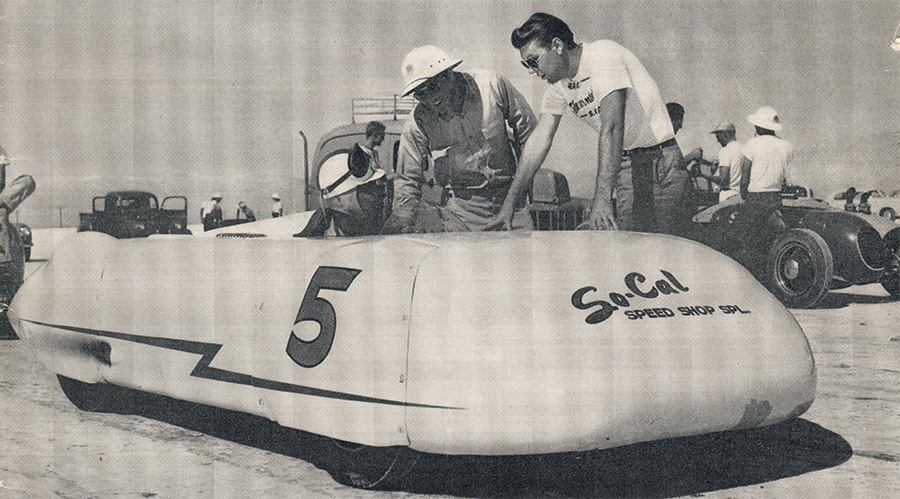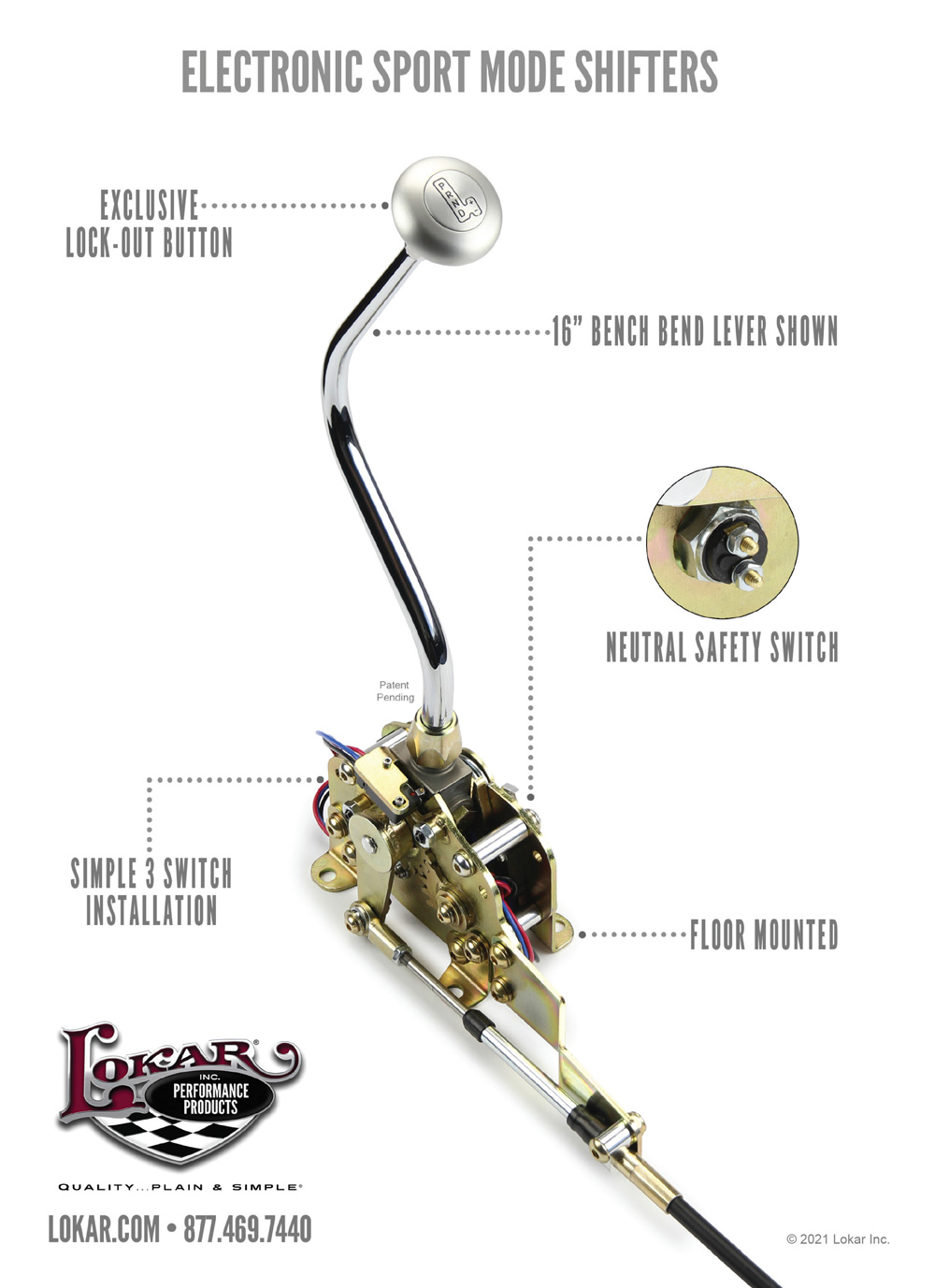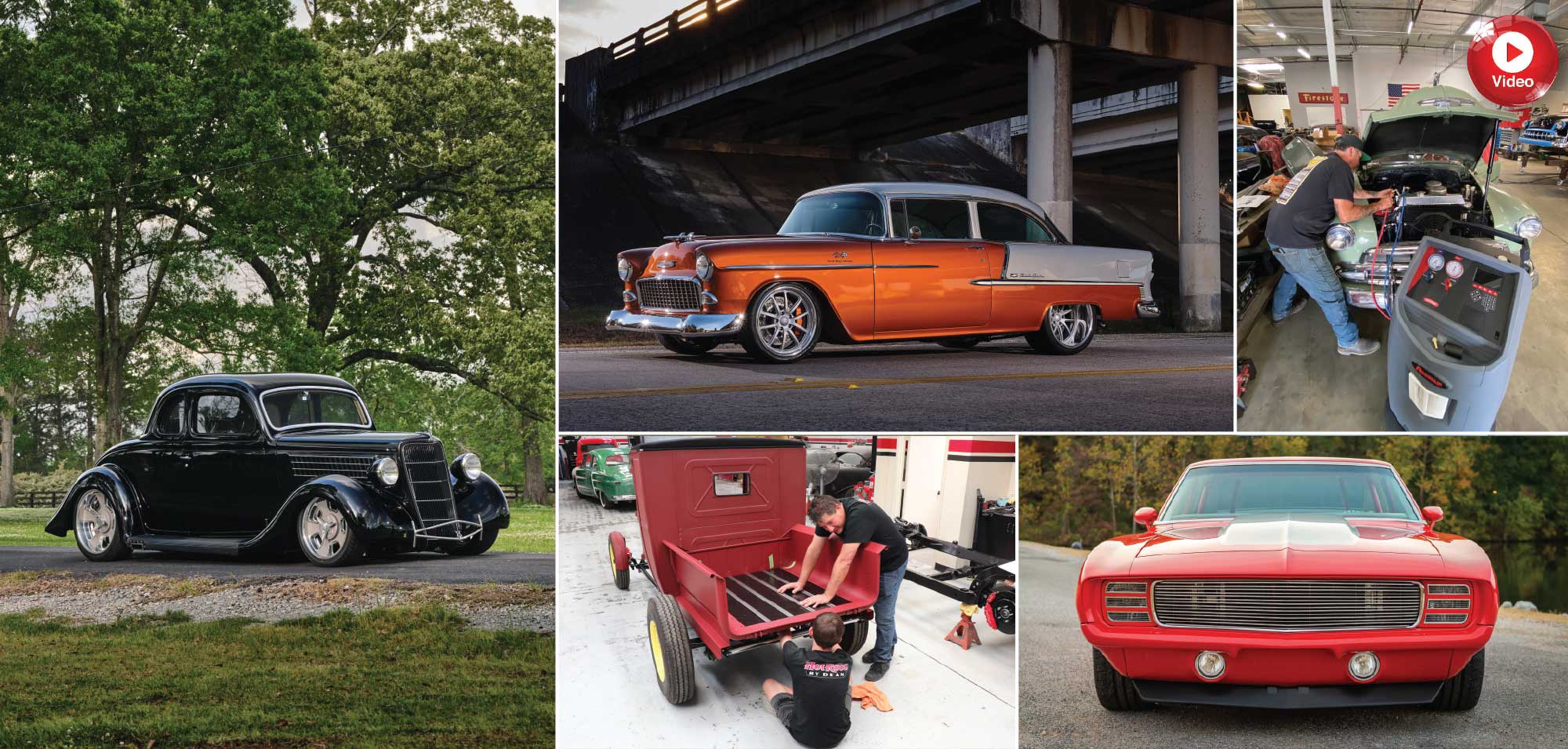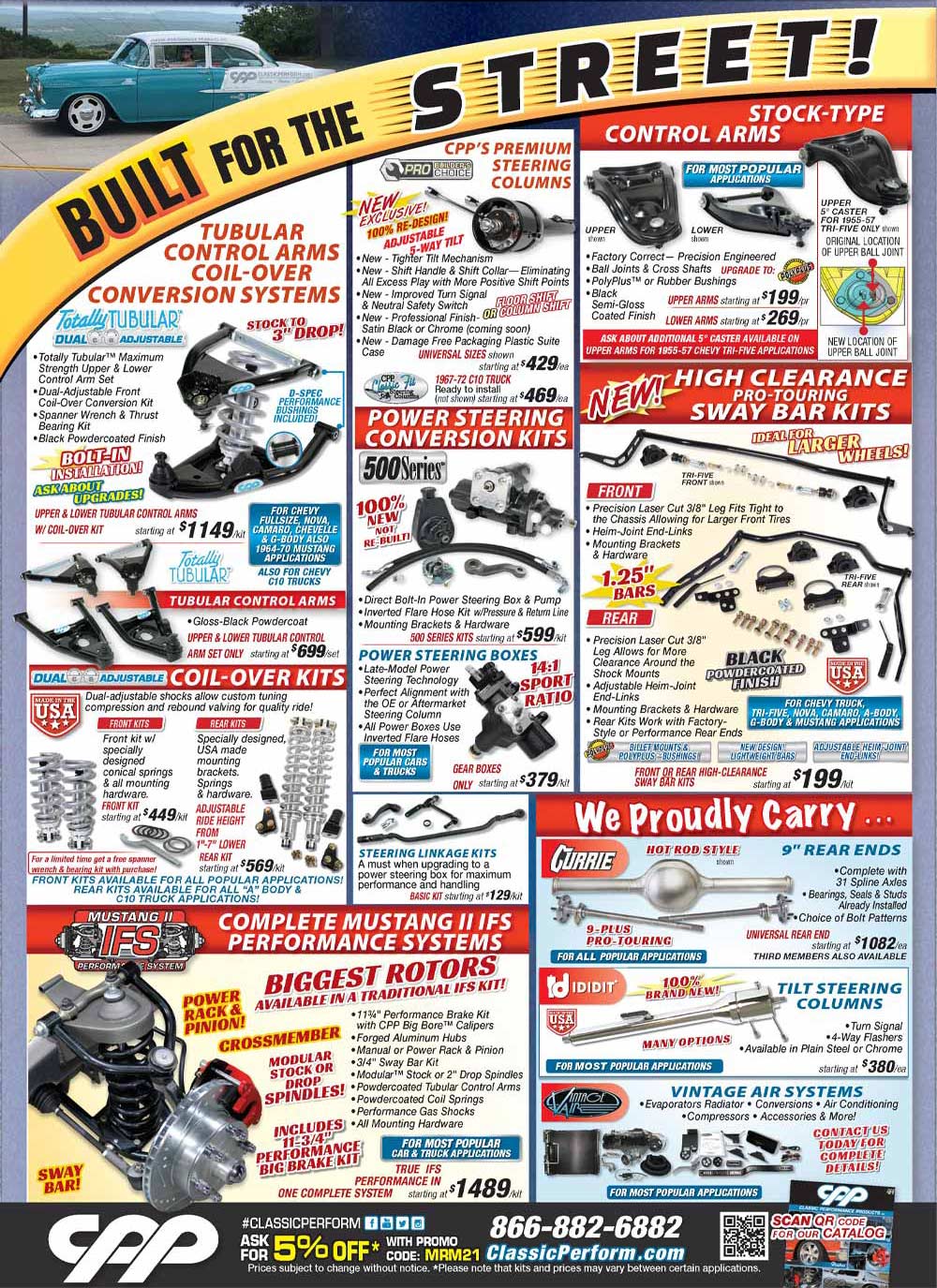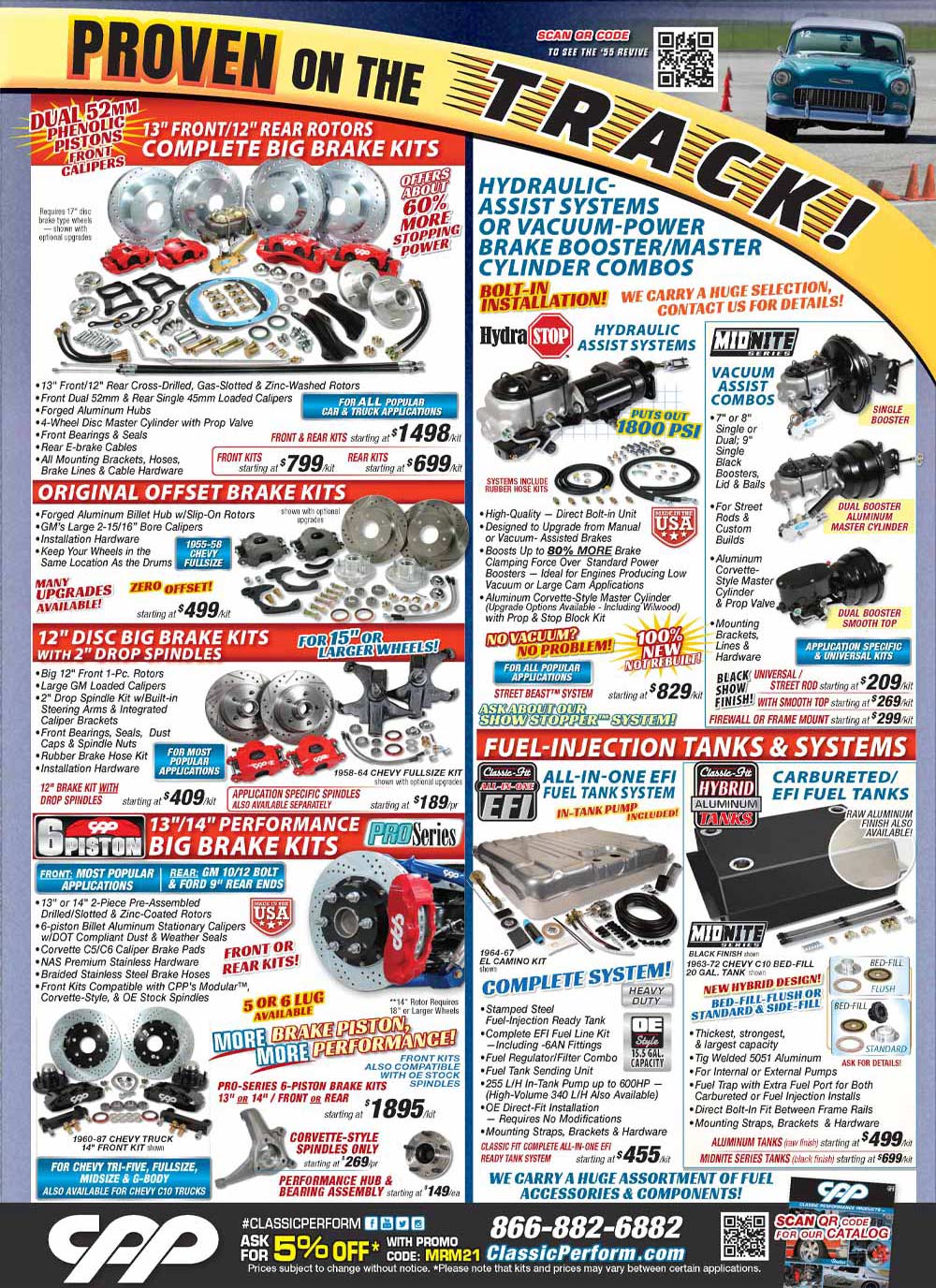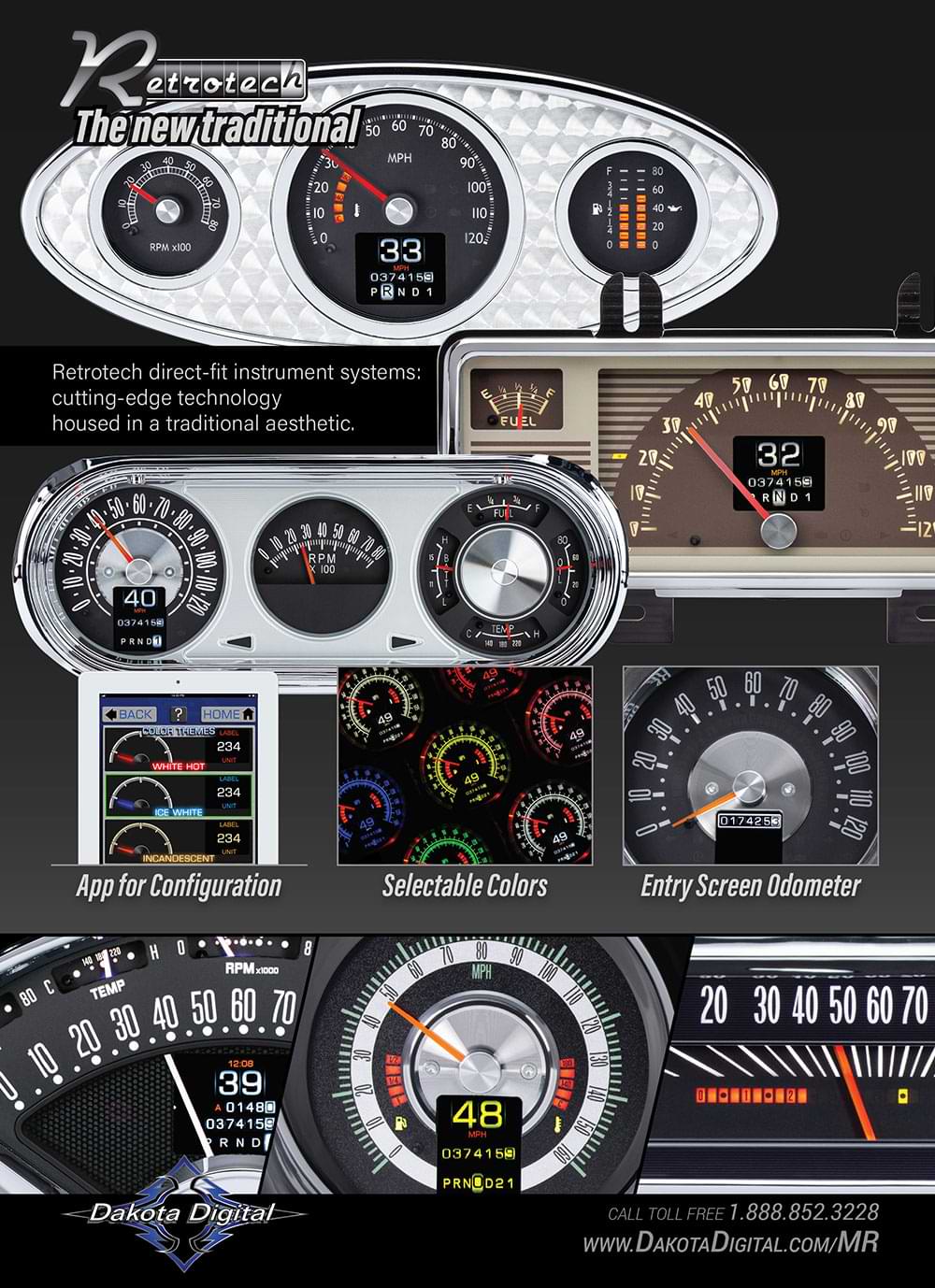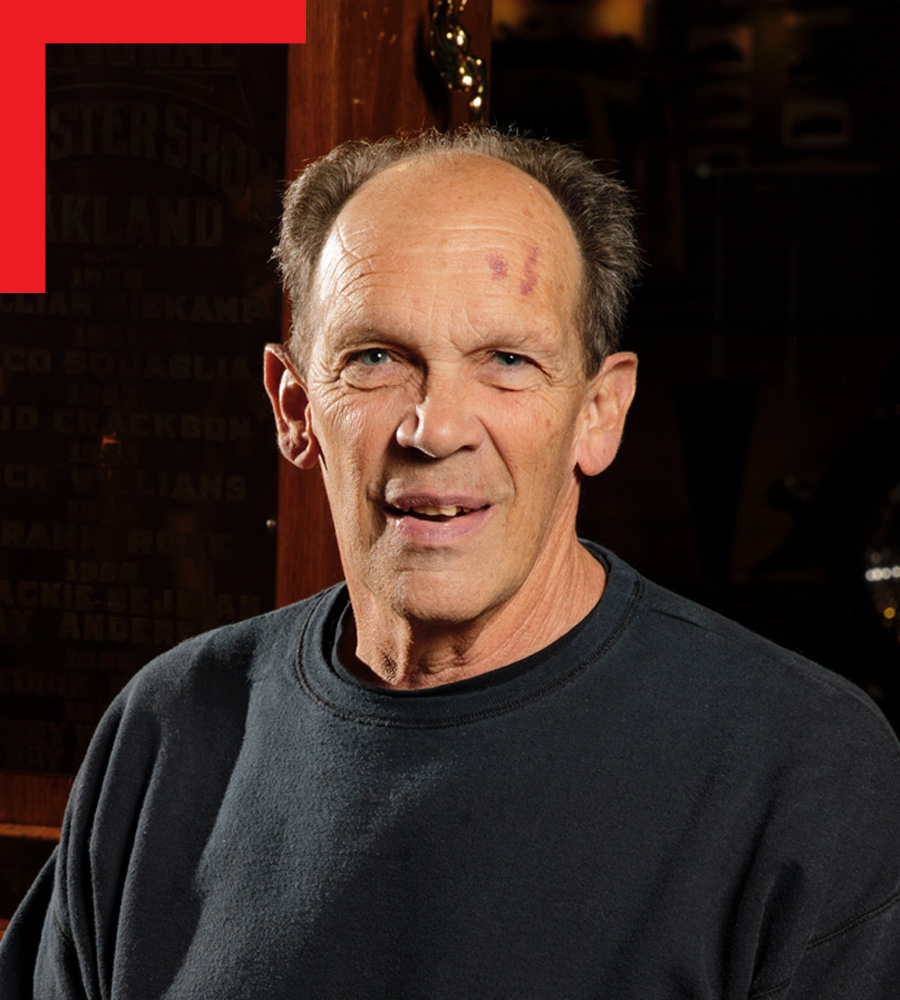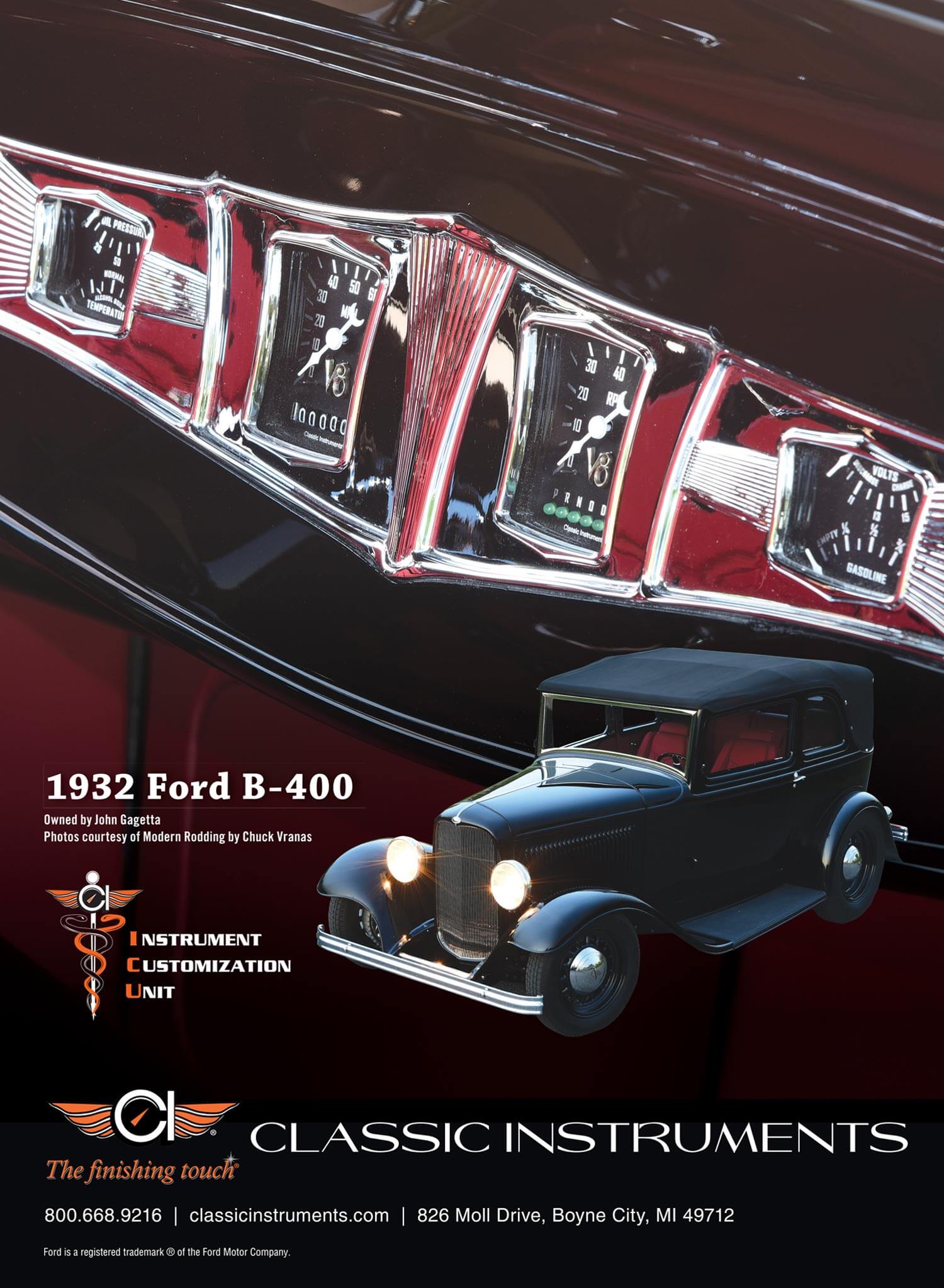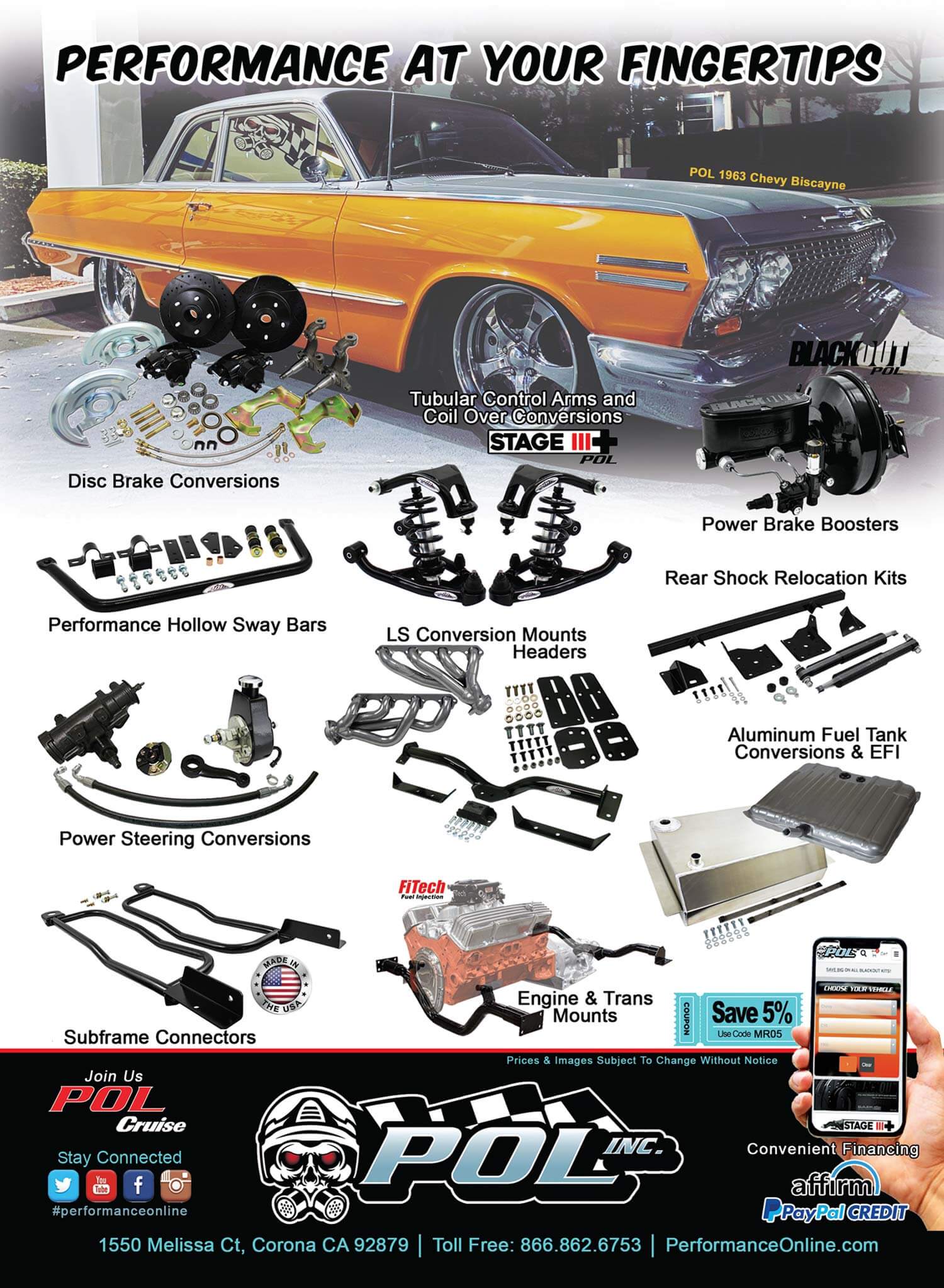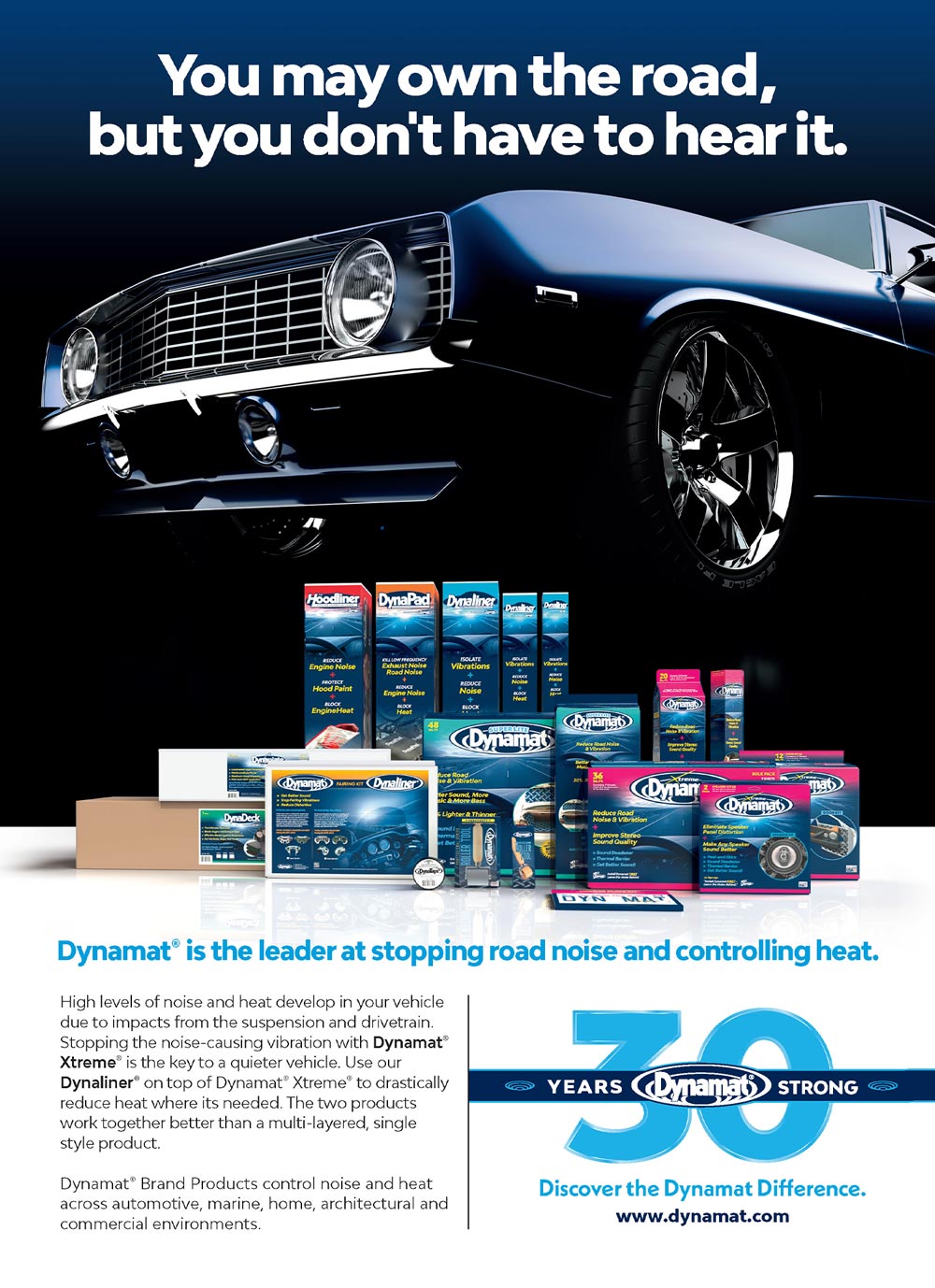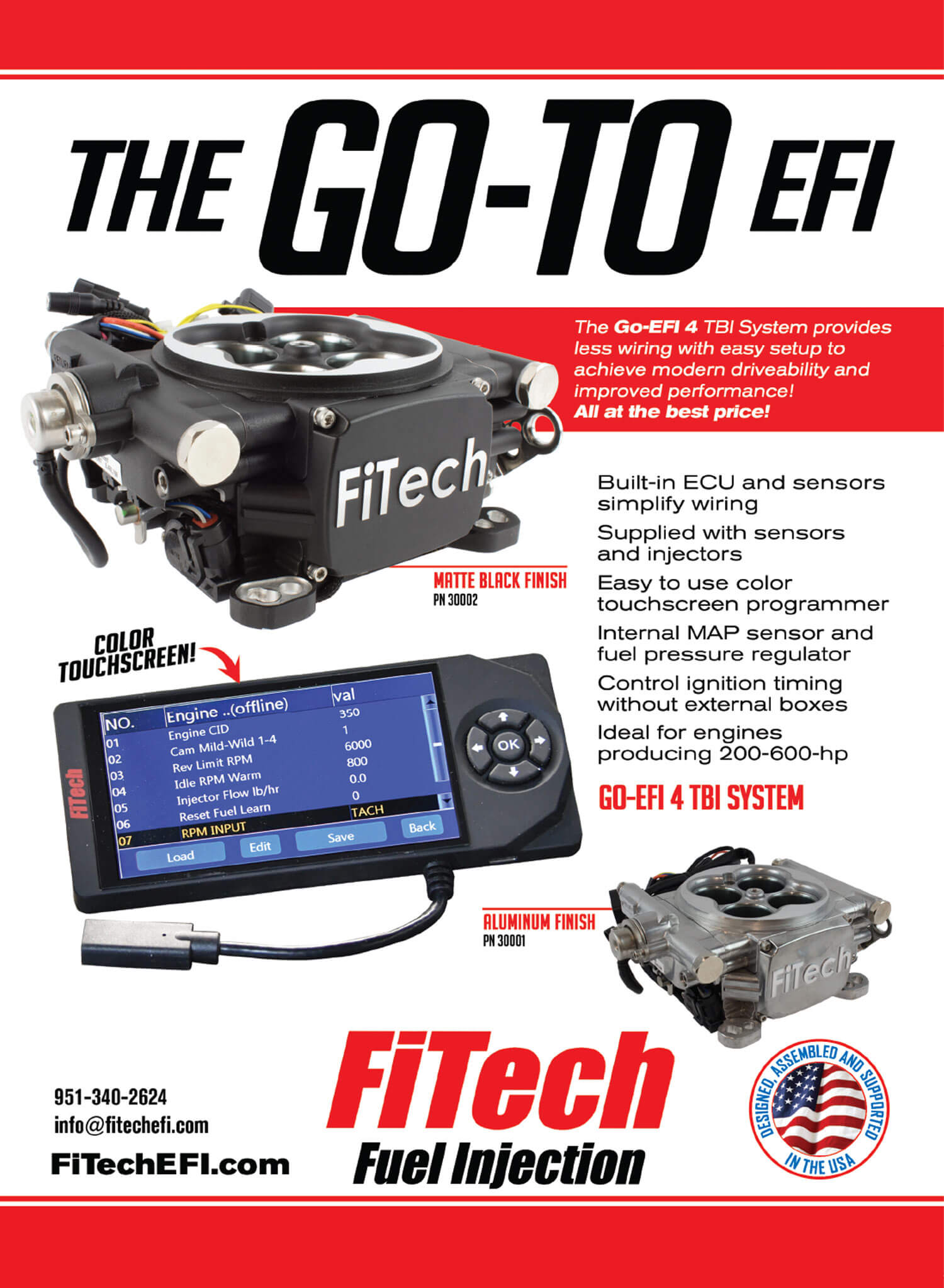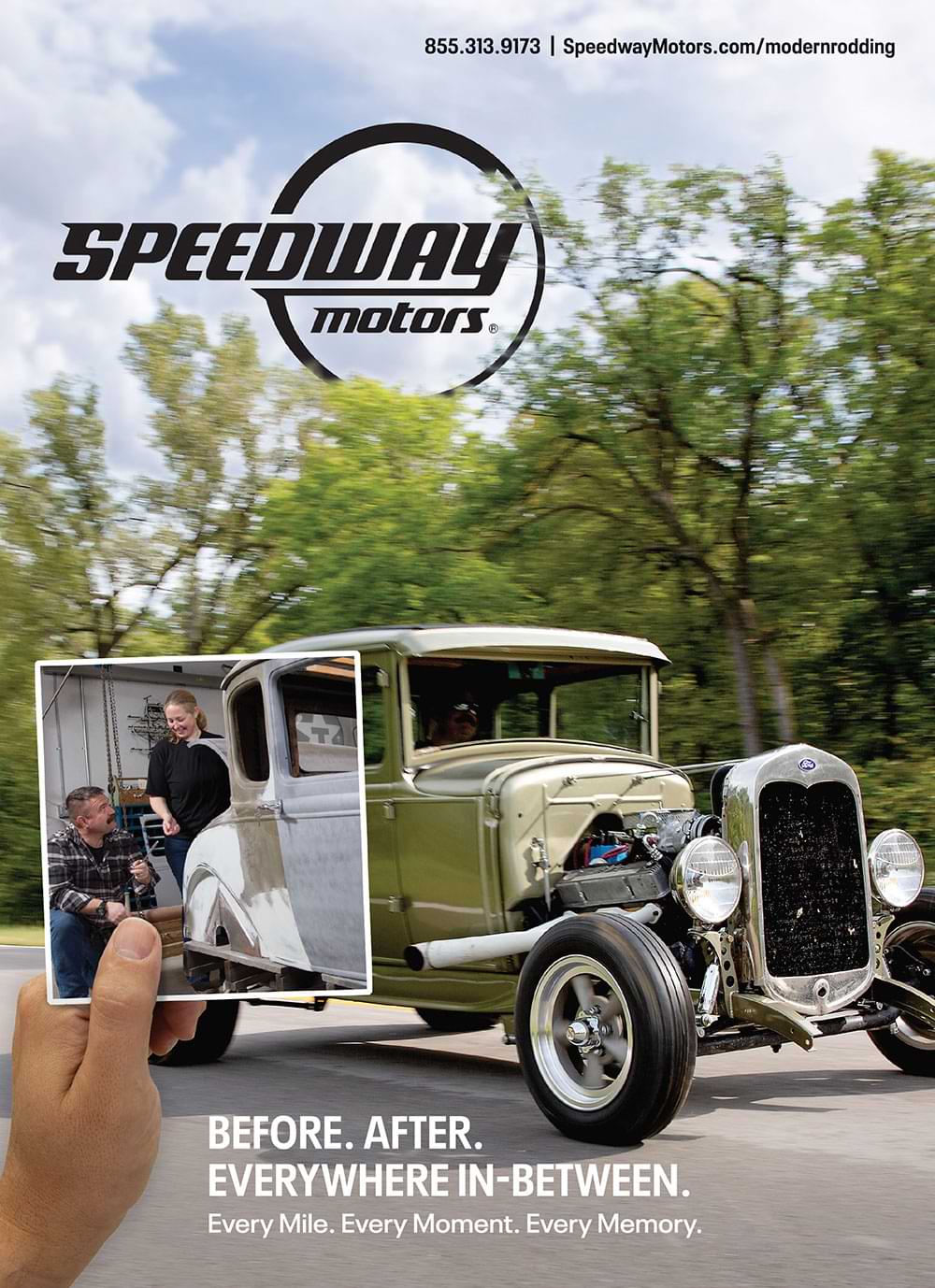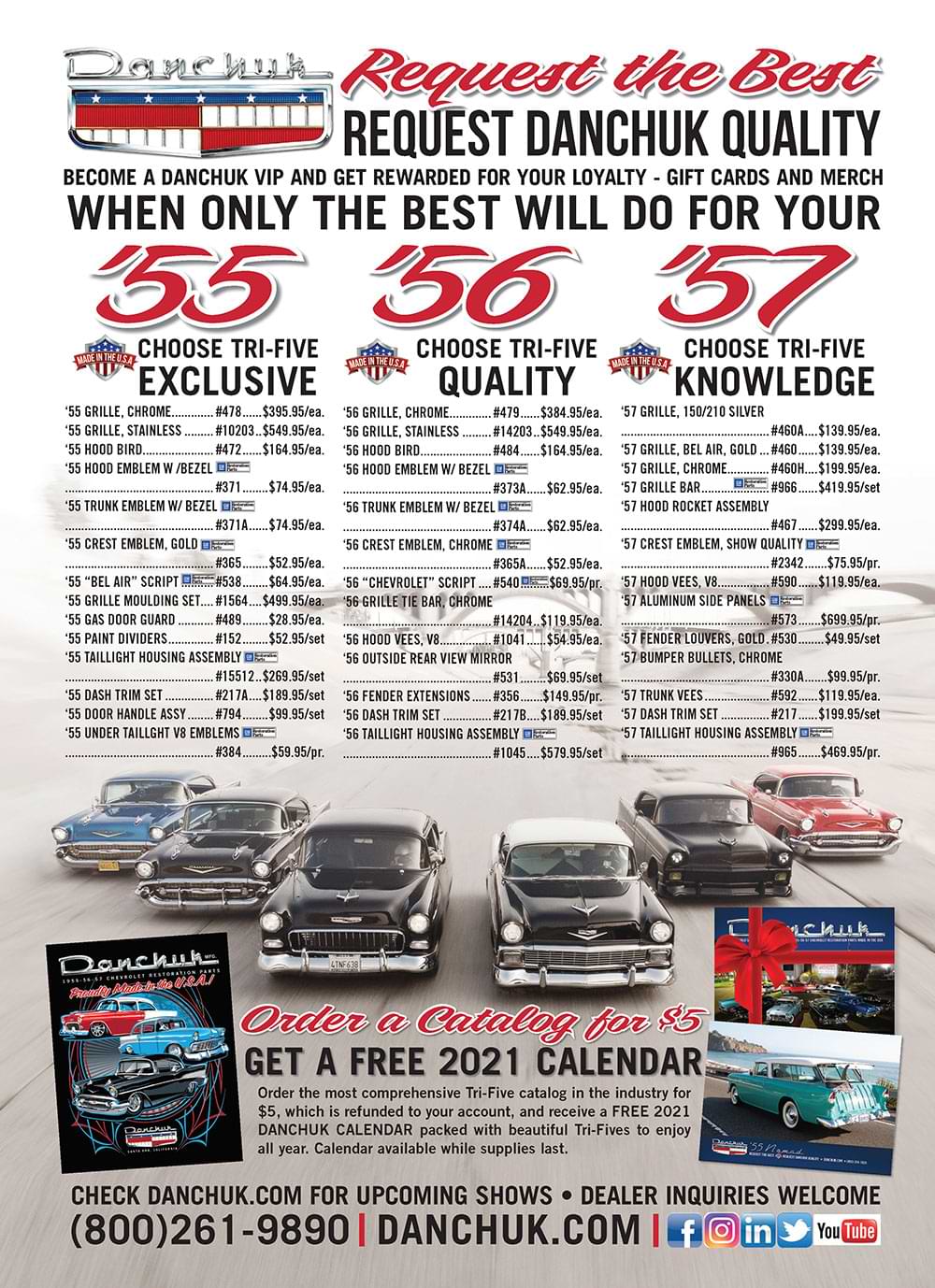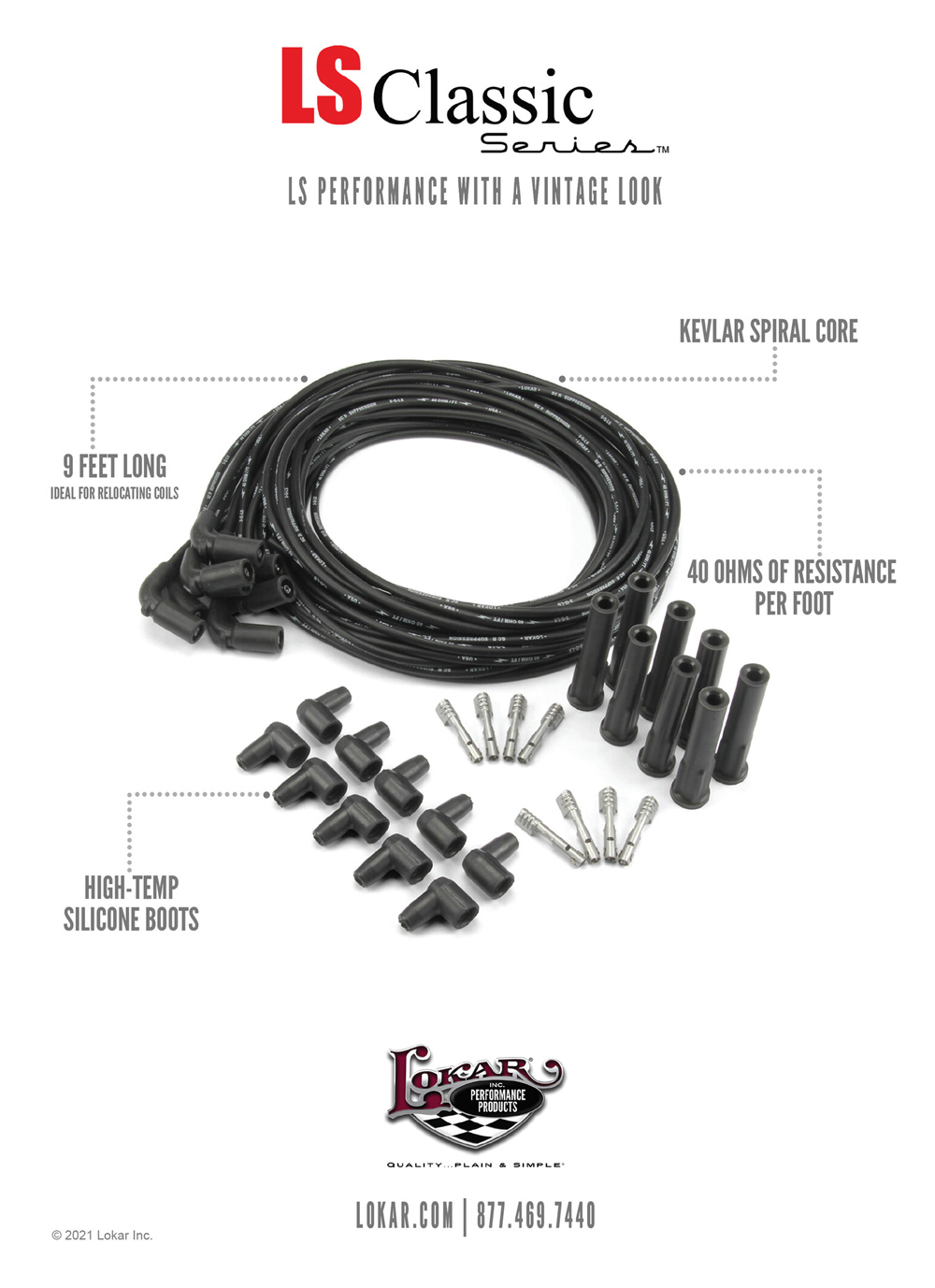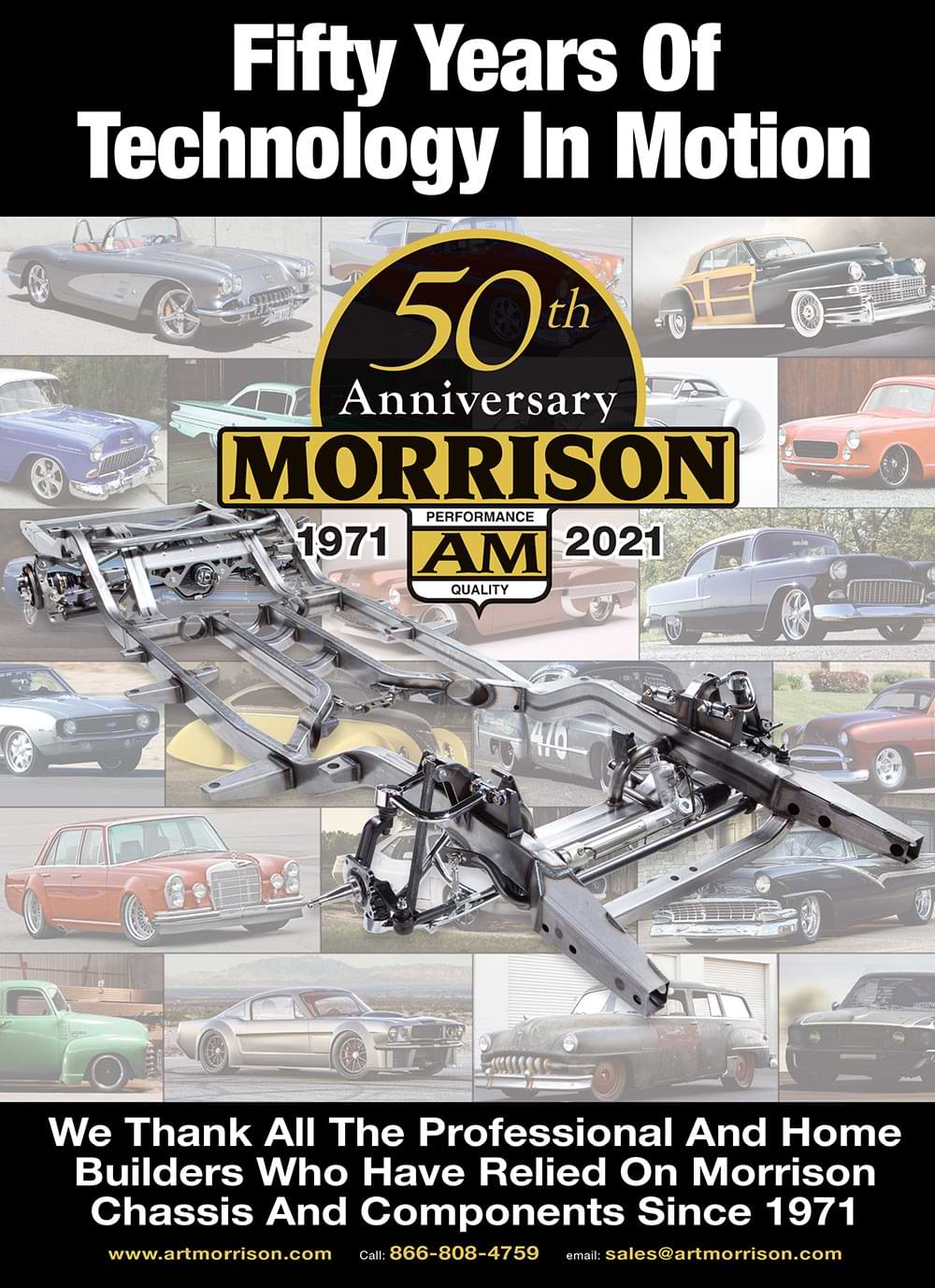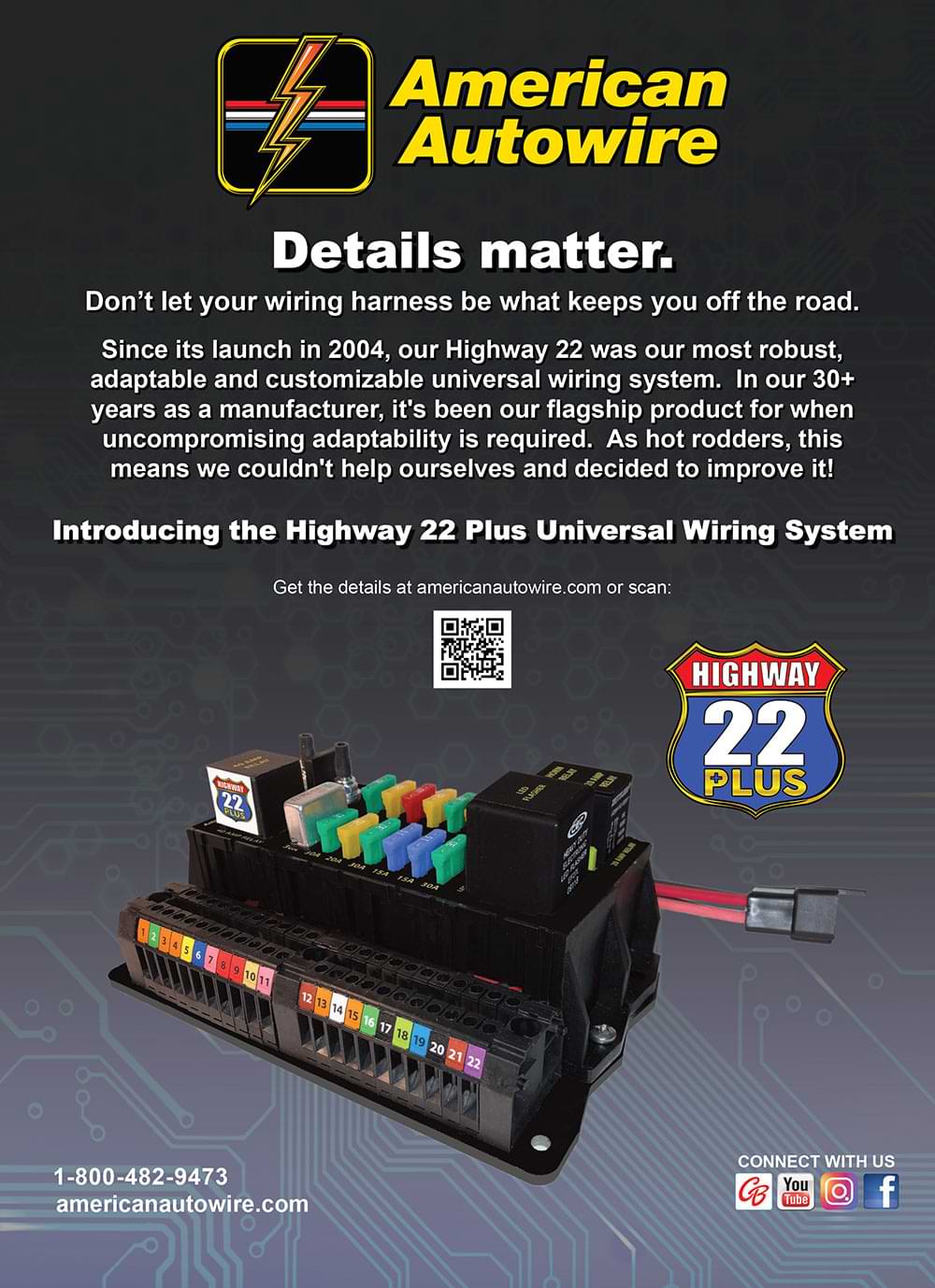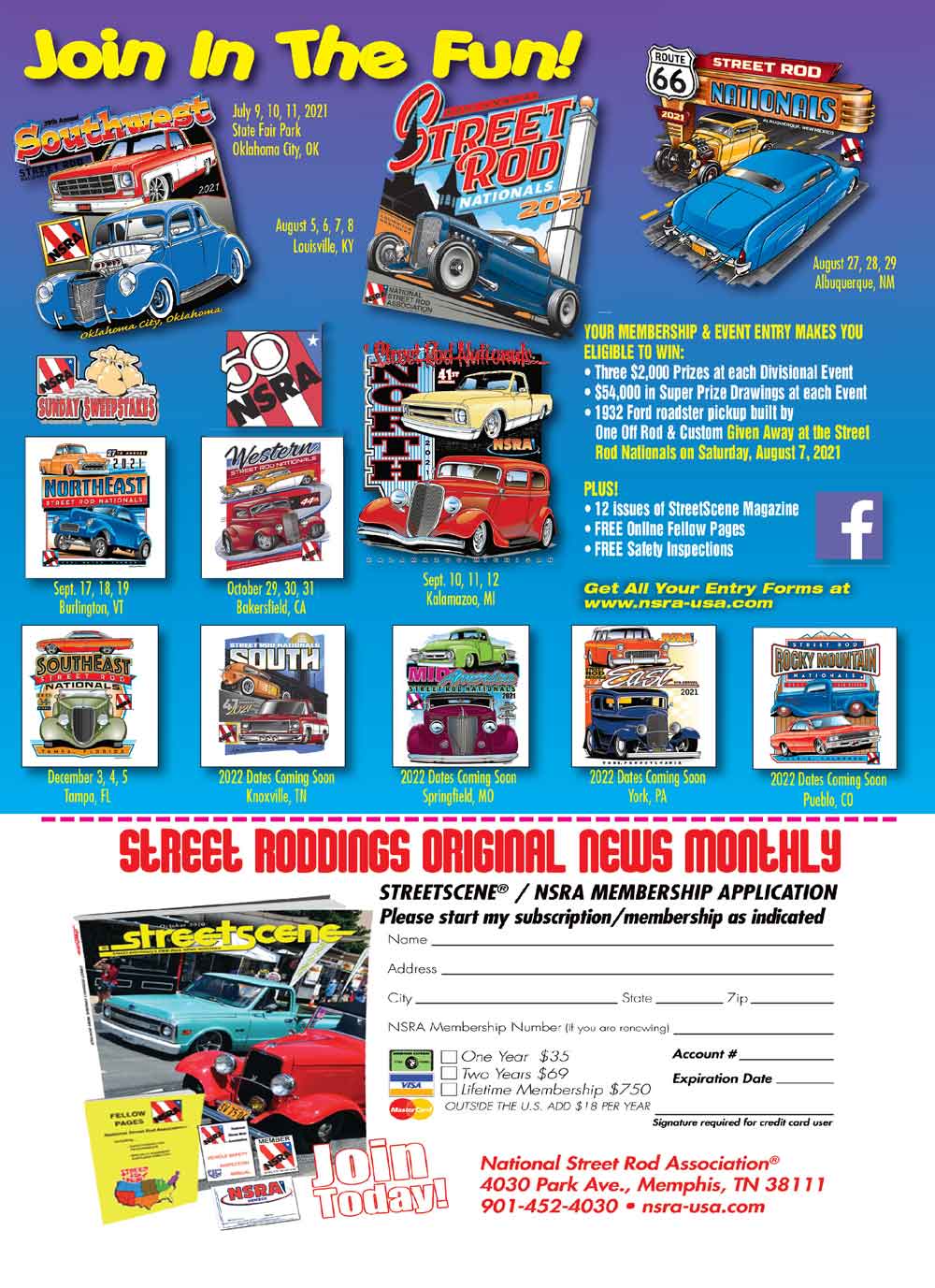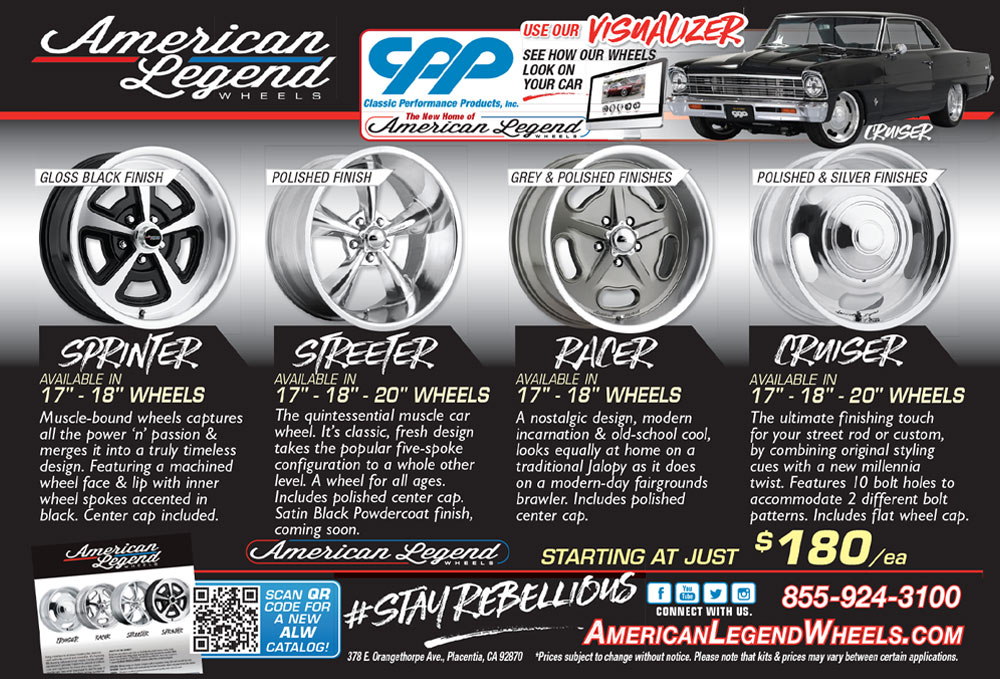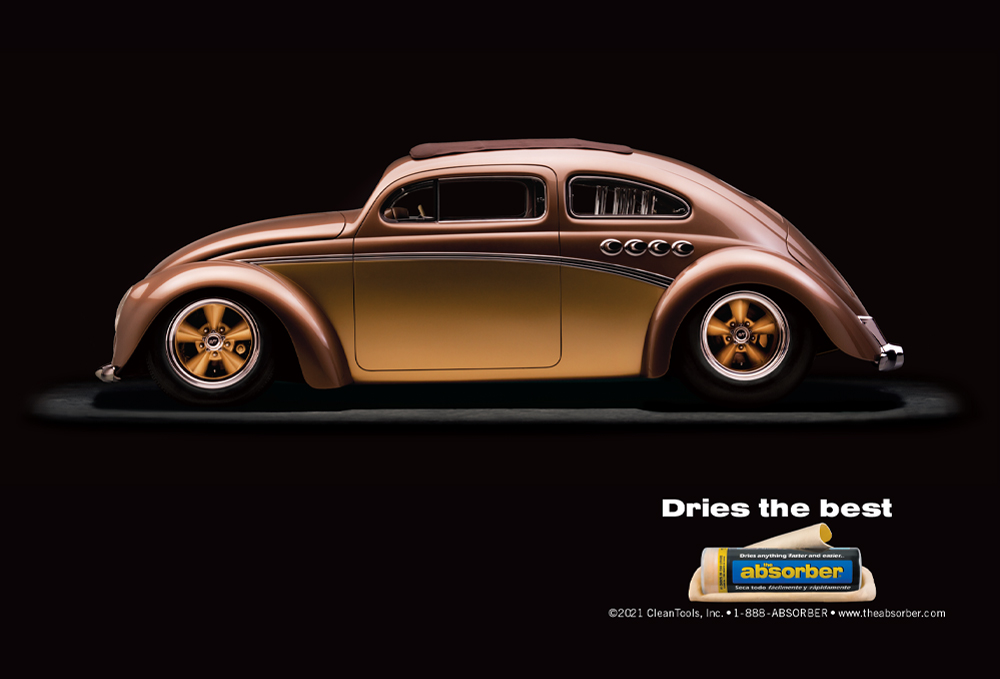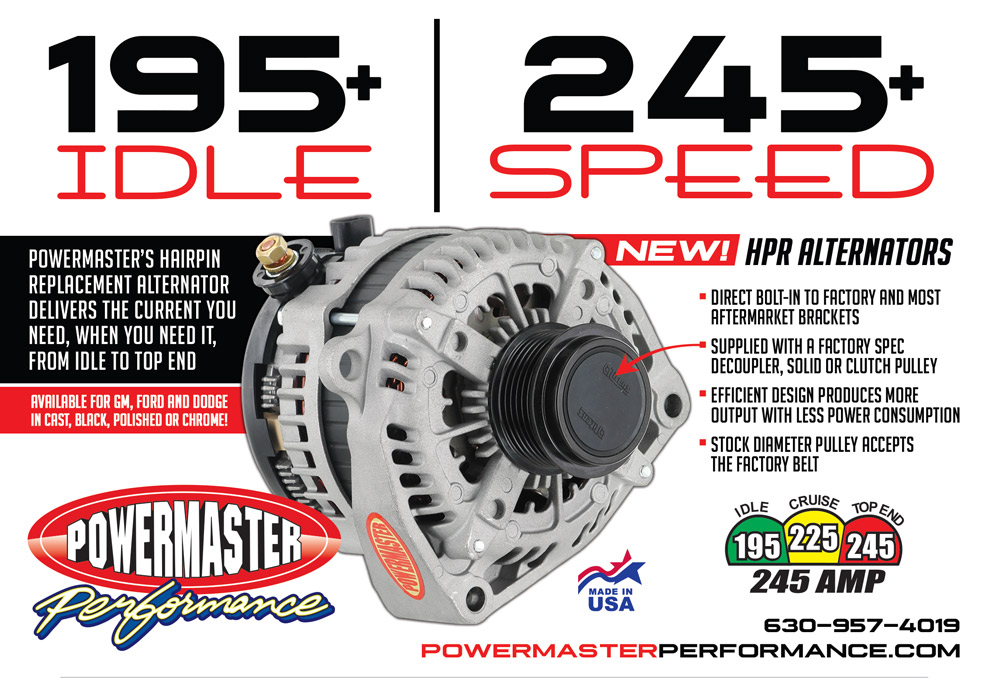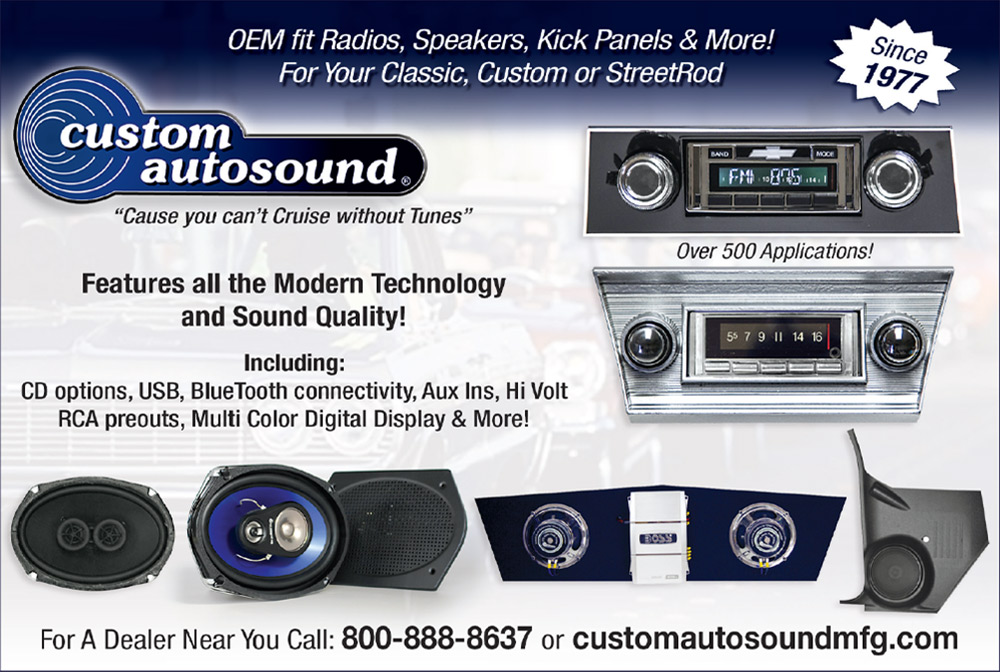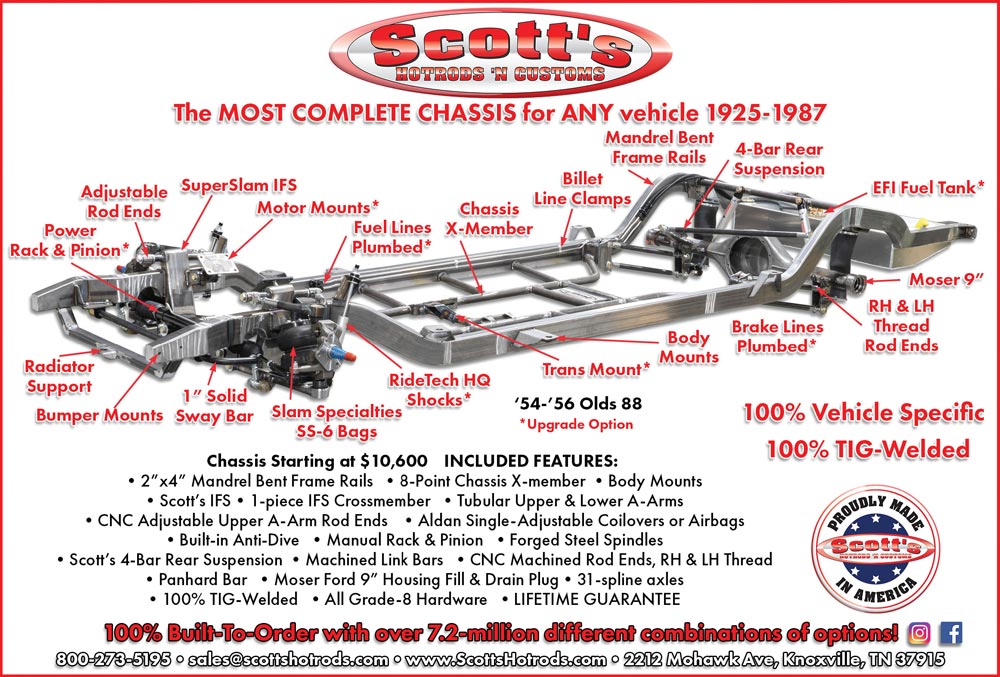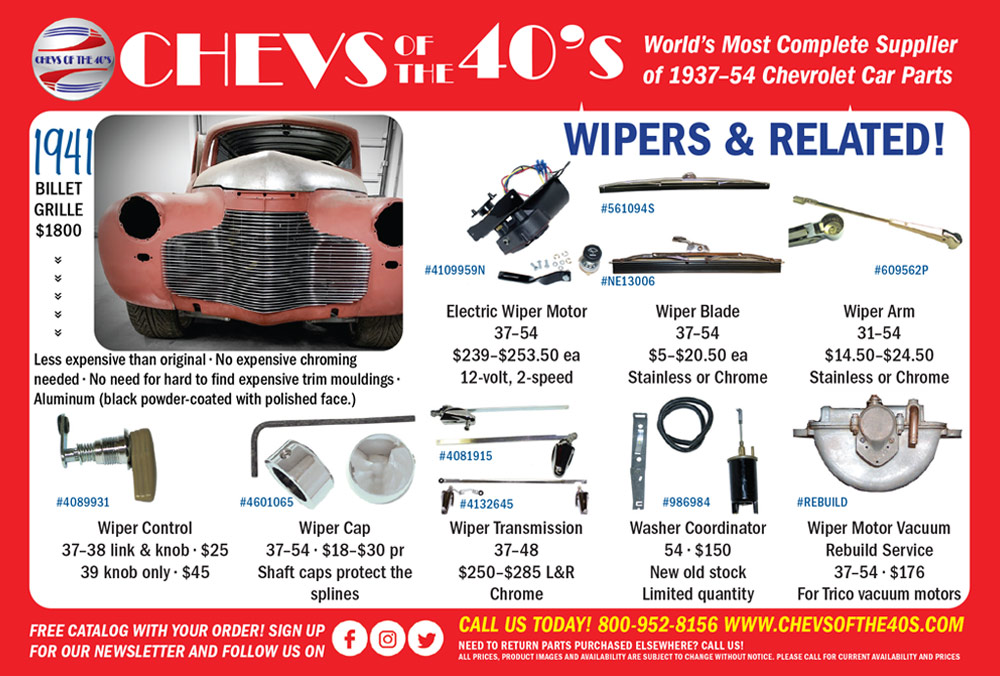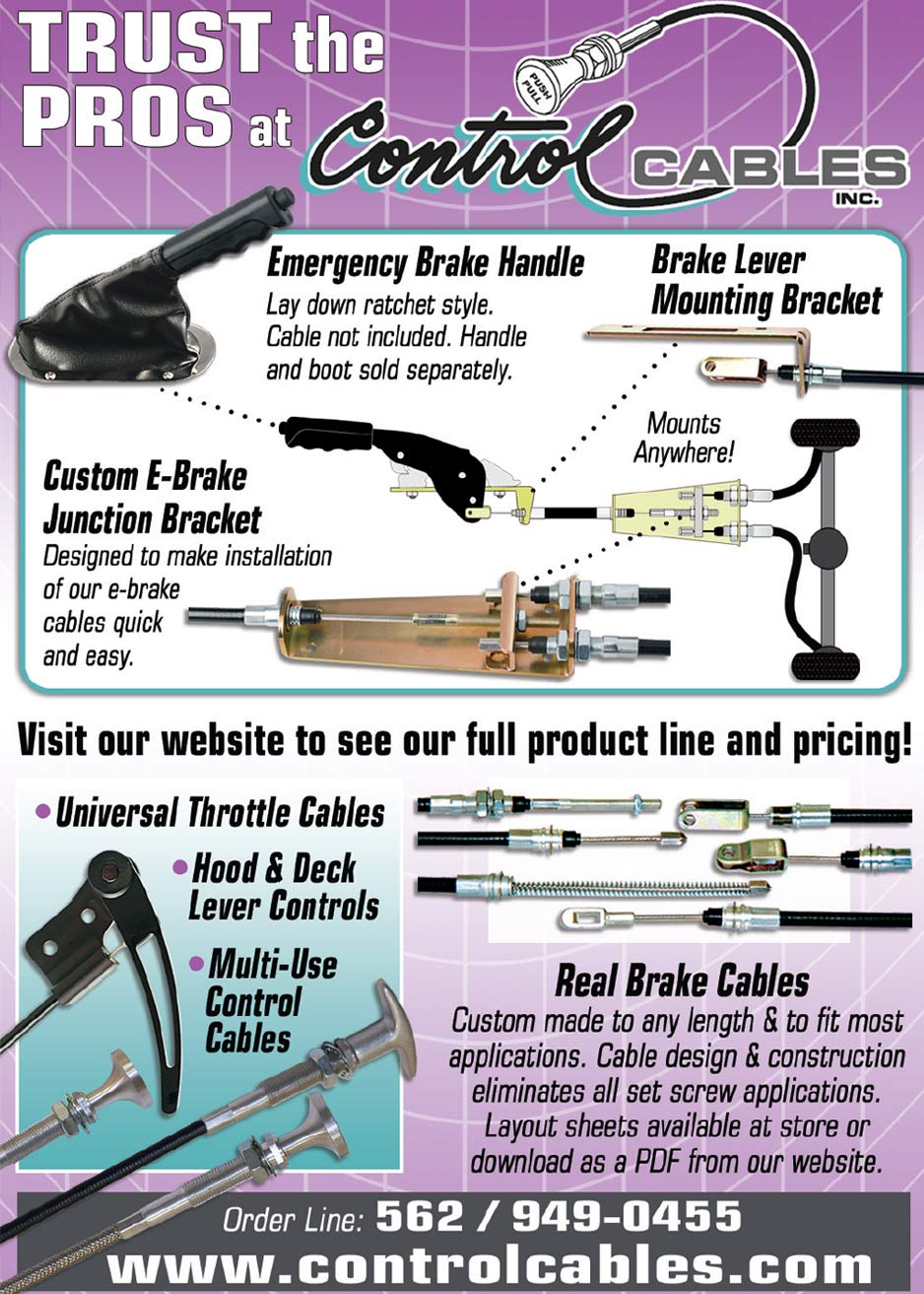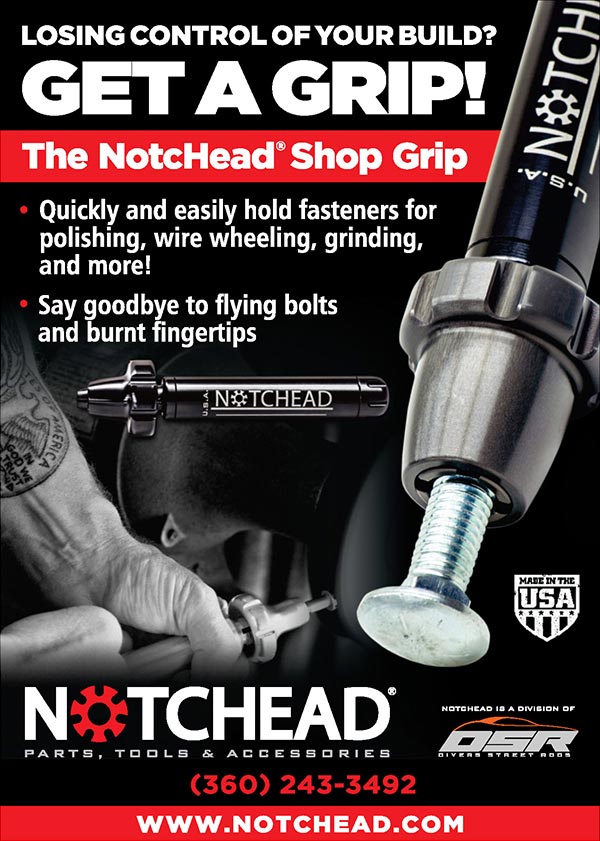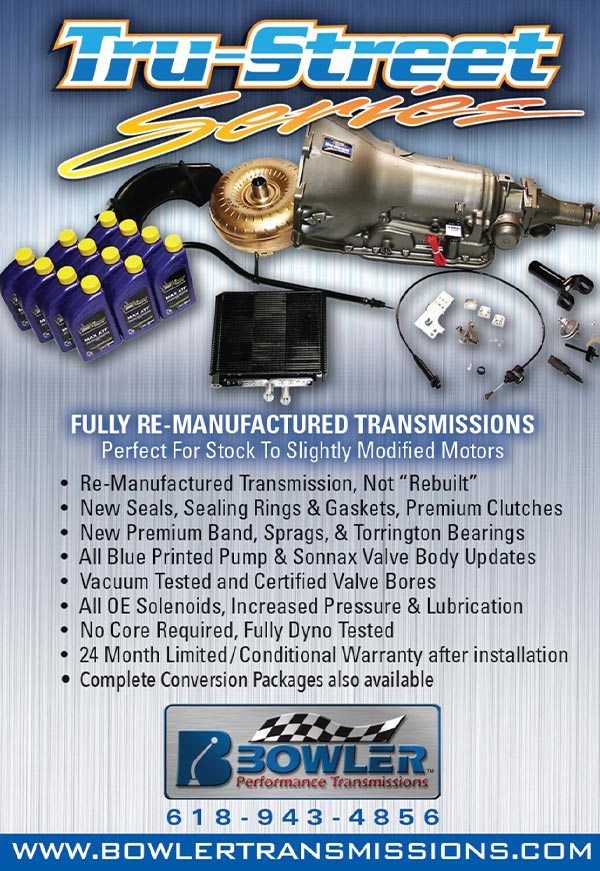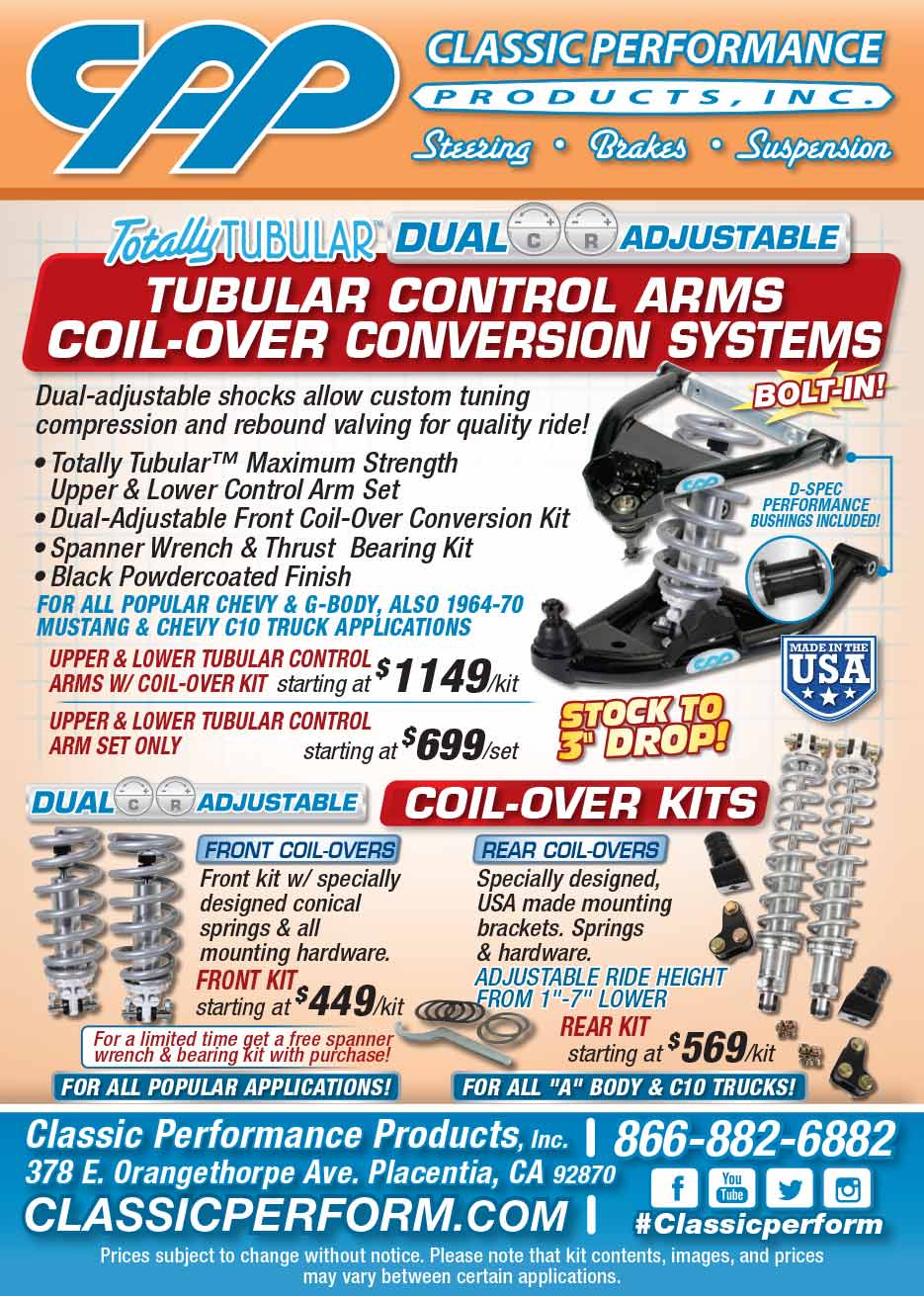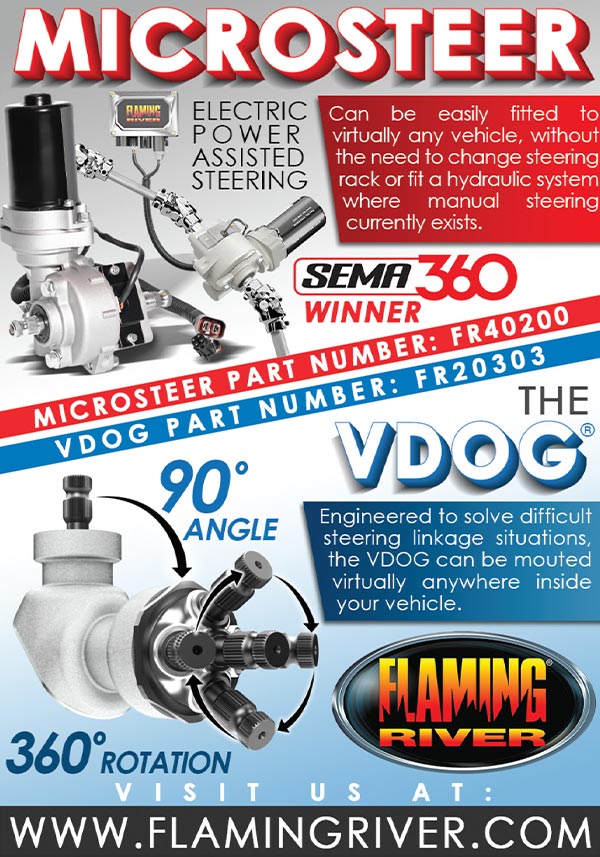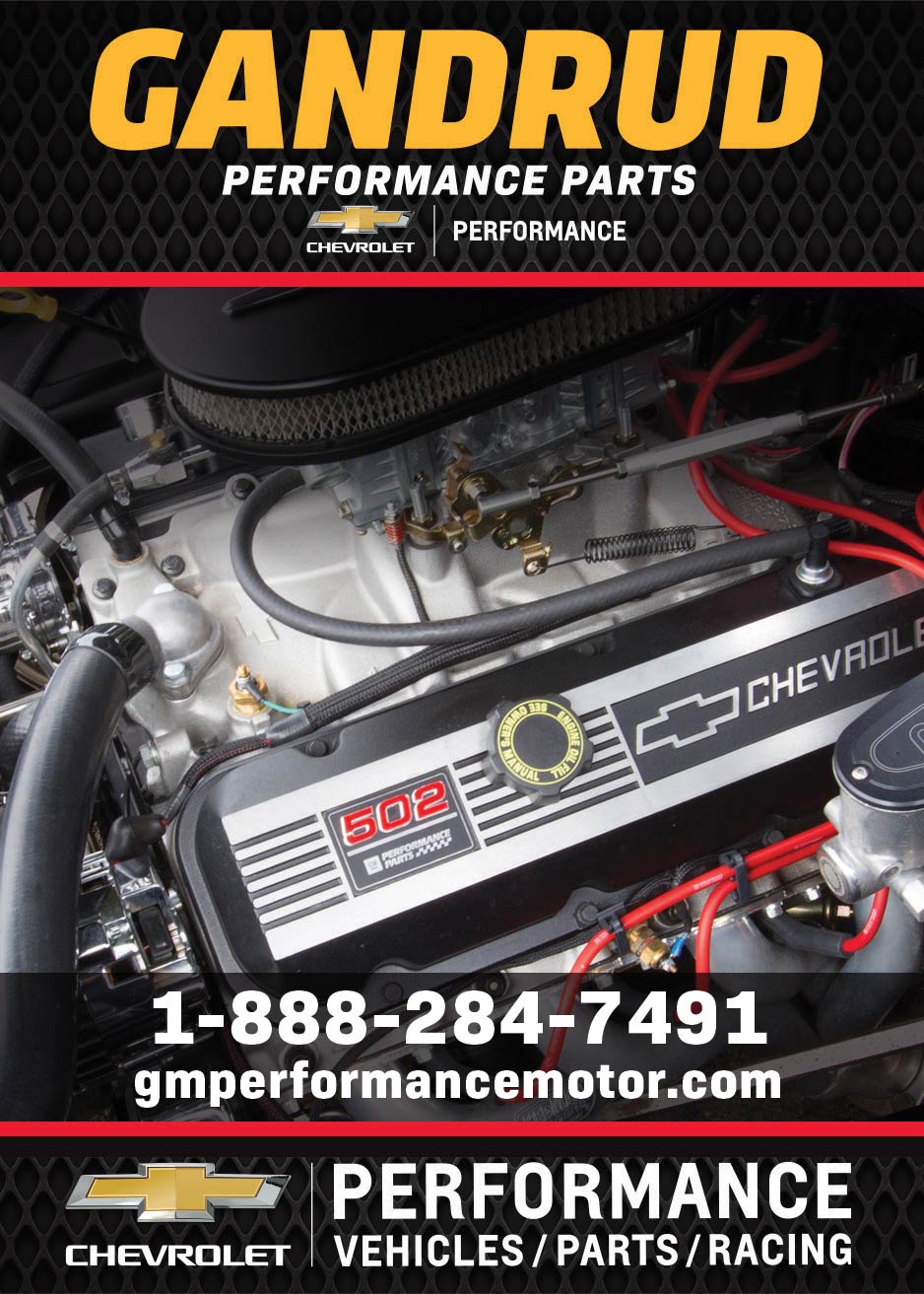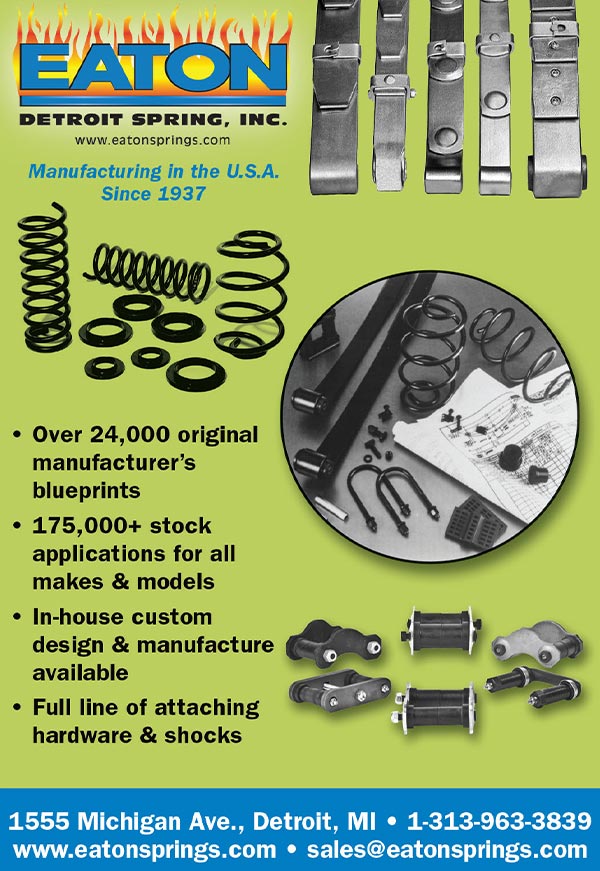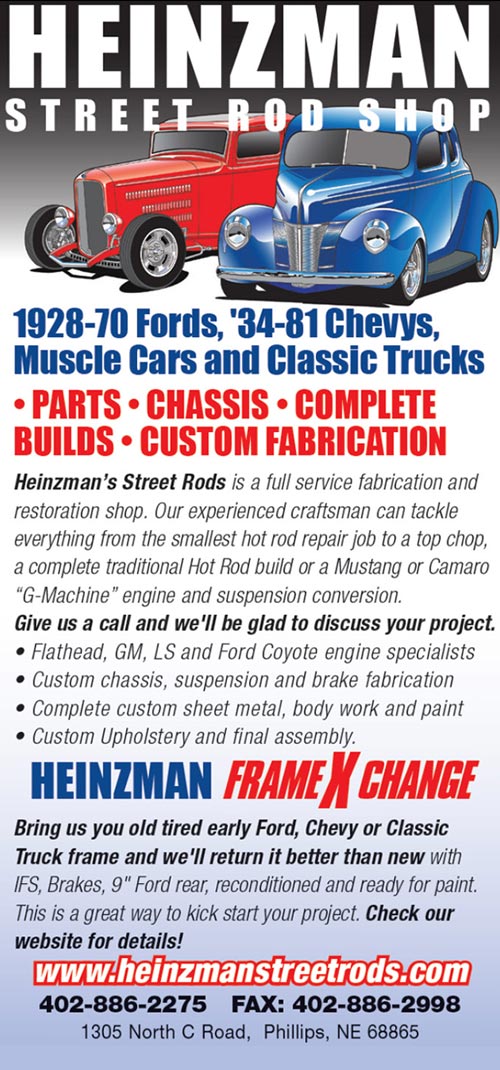
Indeed:
Building a
Mid-Engine
Corvair: Part 1
Modifying
1933-1934 Ford
Quarter-Panels
& Dash
Building a
Mid-Engine Corvair: Part 1
1933-1934 Ford Quarter-Panels & Dash
By Ken Gross, Photography by John Jackson
By Brian Brennan, Photography by John Jackson
By Brian Brennan, Photography by John Jackson
By Brian Brennan, Photography by John Jackson
By Brian Brennan, Photography by Grant Cox
By Brian Brennan, Photography by Rob Fortier
Videography Courtesy of Vintage Air
By Brian Brennan, Photography by the Author
By Gerry Burger
By Ron Ceridono, Photography by Lonnie Gilbertson
By Greg Sharp, Photography Courtesy of the Greg Sharp Collection
Photography by John Jackson
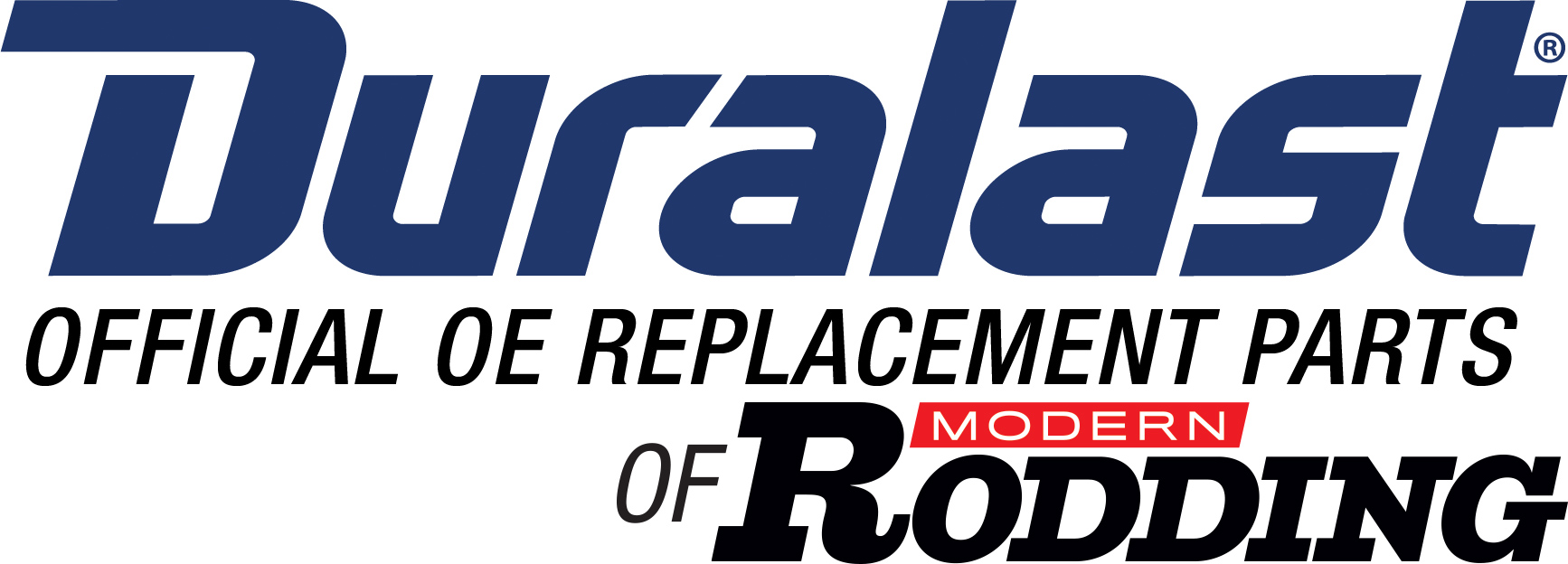

BRIAN BRENNAN
bbrennan@inthegaragemedia.com
TIM FOSS
tfoss@inthegaragemedia.com
YASMIN FAJATIN
yfajatin@inthegaragemedia.com
SARAH GONZALES
sgonzales@inthegaragemedia.com
ROB MUNOZ
Wes Allison, Rodney Bauman, Gerry Burger, Tommy Lee Byrd, Ron Ceridono, Michael Christensen, Ron Covell, Grant Cox, Dominic Damato, John Drummond, Eric Geisert, John Gilbert, Joe Greeves, Ken Gross, John Jackson, Chadly Johnson, Barry Kluczyk, Scotty Lachenauer, Ryan Manson, Josh Mishler, Dale Moreau, Todd Ryden, Jason Scudellari, Chris Shelton, Tim Sutton, Chuck Vranas, John Winter — Writers and Photographers
AllChevyPerformance.com
ClassicTruckPerformance.com
ModernRodding.com
InTheGarageMedia.com
Mark Dewey National Sales Manager
Patrick Walsh Sales Representative
Travis Weeks Sales Representative
ads@inthegaragemedia.com
inthegaragemedia.com “Online Store”

Copyright (c) 2021 In The Garage Media.
Printed in the USA.
The Modern Rodding trademark is a registered trademark of In The Garage Media.
 By Brian Brennan
By Brian Brennan ’m sure all of us thought 2020 was going to be a disastrous year—and it was on many levels—yet somewhere in our “storm cloud” there was a glimmer of hope. At the same time, those of us here at In The Garage Media have managed to keep the car magazine print (and digital) industry going forward, thankfully to you our readers and supporters. At the same time many hot rod parts manufacturers and builders thought it too would be a hard year, which it was, but overall, it has proven to be a favorable year for the industry.
Look overhead at the storm clouds and I believe you will see the silver lining. Our industry’s silver lining makes its presence known in Modern Rodding’s continued success and that virtually every manufacturer I speak to tells me 2020 turned out to be an “up” rather than a “down” year. Manufacturers and builders alike tell me that business was robust for 2020 and as they charged into 2021 business was looking even better. Every cloud apparently does have a silver lining.
Turns out everyone, and I mean everyone, worldwide took several steps back as 2020 began to reveal itself in the midst of the pandemic. And while I’m sure all of us would agree that was a prudent move that very few predicated or could have understood the ramifications of what was to come next.
 By Brian Brennan
By Brian Brennan 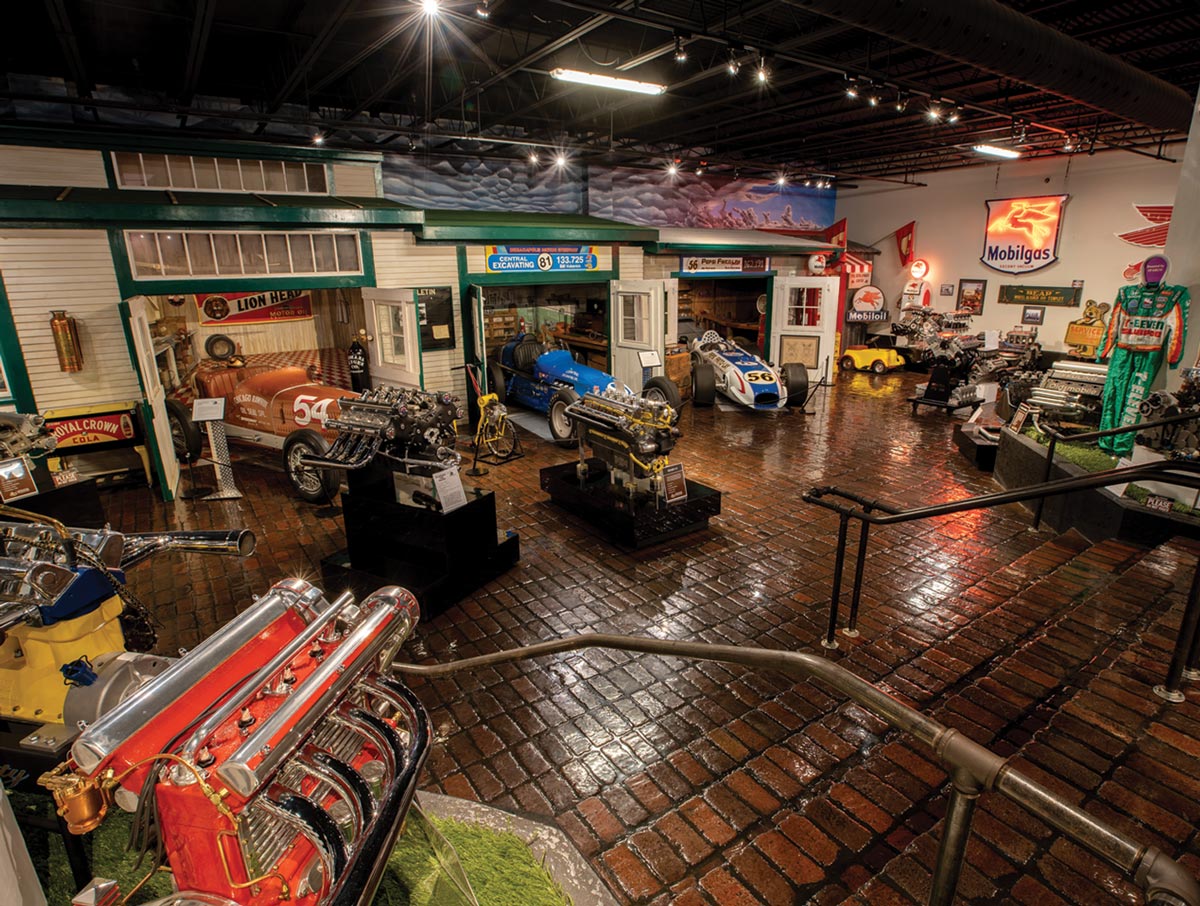
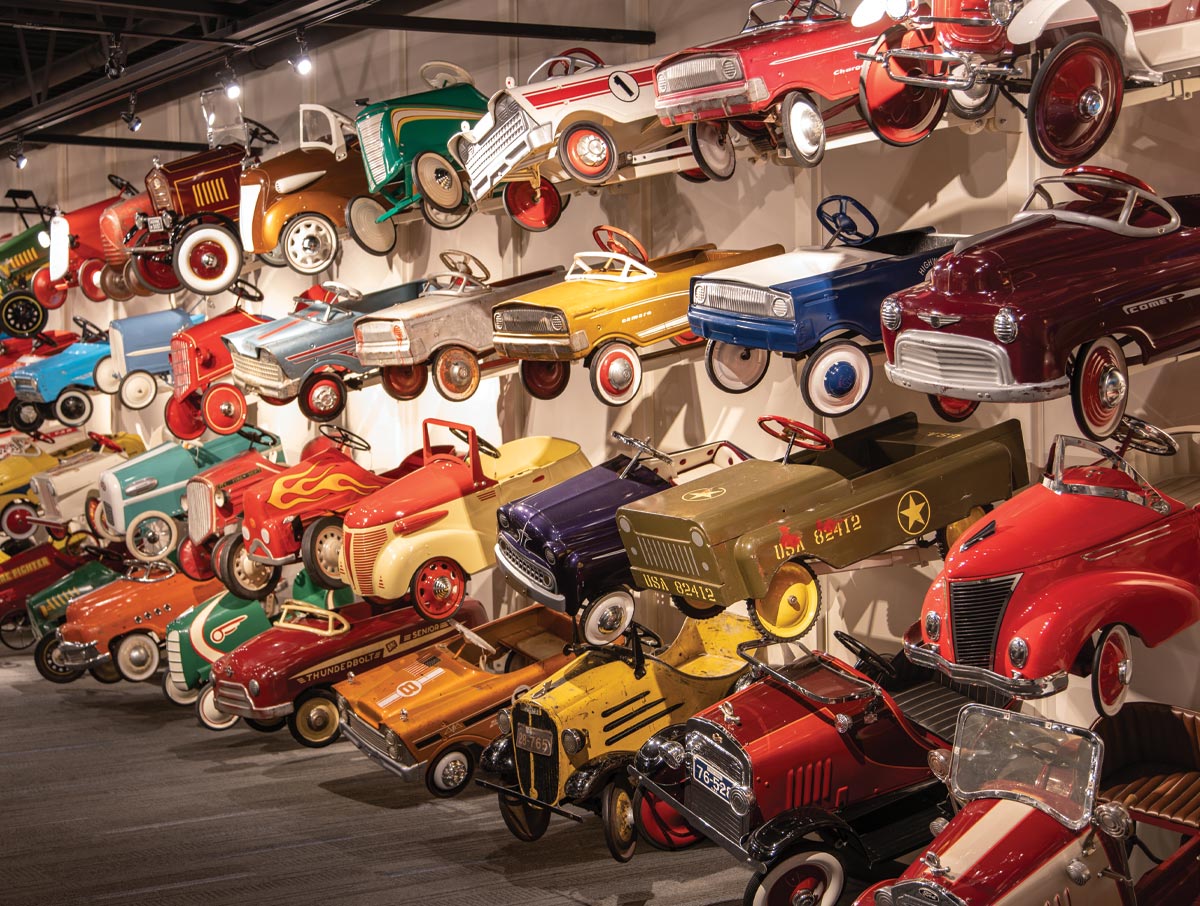
 Speedway Motors Museum of American Speed Voted #1
Speedway Motors Museum of American Speed Voted #1The Speedway Motors Museum of American Speed was recently recognized as one of the 10 Best Reader’s Choice–Best Attraction for Car Lovers. We would have to agree wholeheartedly.
Located in Lincoln, Nebraska, it’s the home to over 150,000 square feet of display space covering three levels. For those of you who have been there you know that once isn’t enough as you can’t spend the time you want just staring at all of the mechanical genius that’s on display. The museum came about in 1992 as a lifelong dream of “Speedy” Bill and Joyce Smith. (It should be noted that Speedy Bill had been collecting all manner of racing and speed equipment since 1952.) You will see racing and speed equipment but you will also see collectibles that represent both of their interests outside of racing. Absolutely fascinating.


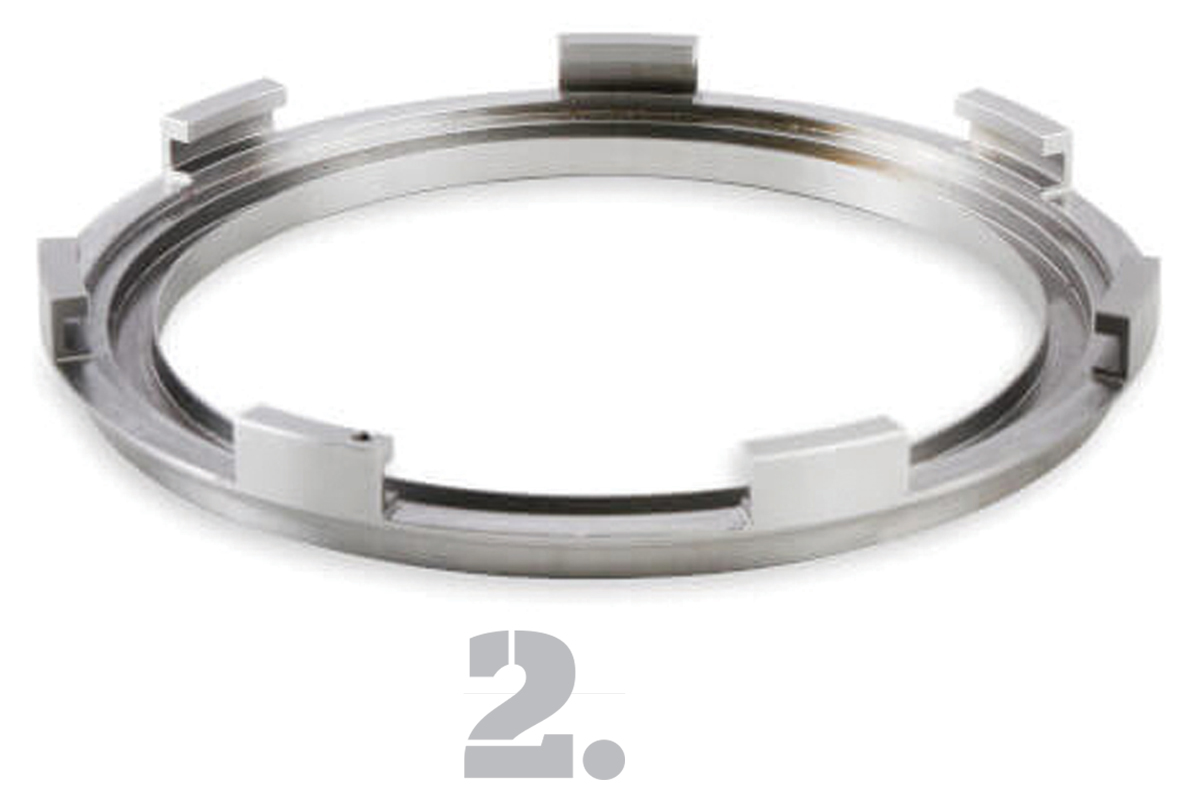
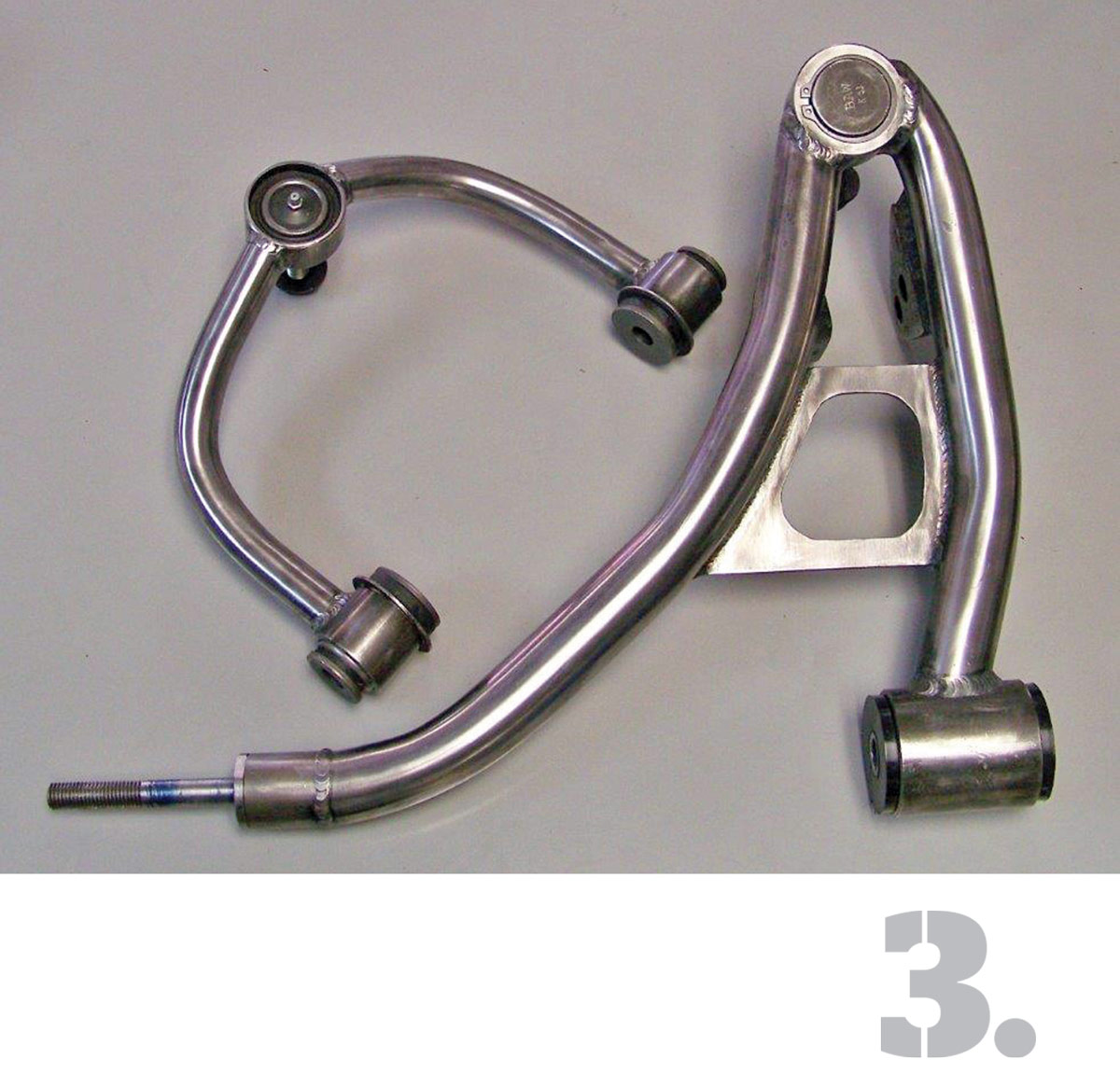
When the gears are stationary, looking at this mechanical piece of art is intriguing, but when they are turning in unison it is nothing short of mesmerizing.
At the core is an irregular icosidodecahedron hub that precisely positions each gear for attachment with a miniature bushing and socket head bolt, which creates a 2-inch od for the knob.
If you don’t break out the Brasso to keep them shiny, the gears will develop their own unique patina over time.
These knobs have a 3/8×16-inch mounting thread and to make it easy to get the gears turning, a custom spanner wrench and a removable drive gear are included with each knob.
Fatman Fabrications has the answer with Tubular Control Arms narrowed 1 inch per side. They’re TIG welded in fixtures, using 1-1/2-inch lower and 1-inch upper 0.188 heavy wall DOM steel tubing and assembled with top-quality bushings and ball joints. All the original mounting points for the 2003-2011 Ford design are provided. The lower mount for the factory coilover assembly is provided with an alternate hole to allow a 1-1/2-inch drop while retaining the stock spindles and allow easy conversion to RideTech or QA1 coilovers.

 Photography by John Jackson
Photography by John Jackson“My dad was an autobody man for a shop in Queens (New York),” Chuck Wray says. “We didn’t have much money. So I read used hot rod magazines that I got from the guys in the shop and I fell in love with the hot rods I saw in the little books, like Rod & Custom and Rodding and Re-styling. I liked that late-’50s/early-’60s look.
“I became a restorer,” Chuck continues, “mostly working on Italian exotics. Back in 1995, you [Ken Gross] wrote an article in The Rodder’s Journal about a chopped-and-channeled 1932 five-window highboy coupe that was built by Donn Lowe in Oregon. When I saw that car I was just blown away. I wanted to build the car I thought they should have used in American Graffiti. I never liked Milner’s coupe. So, when I saw Donn Lowe’s car, I felt that was what they should have used in the movie.”


 Photography by Rob Fortier
Photography by Rob Fortier  Videography Courtesy of Vintage Air
Videography Courtesy of Vintage Airor the longest time air conditioning was a dream that many an early hot rodder didn’t have—in fact, couldn’t have—on their early iron. As times changed air conditioning worked its way onto all forms of transportation to the point it’s almost impossible to purchase any car or truck today that doesn’t have a sophisticated cooling and heating system. Even so, hot rods and A/C were still distant cousins. However, over time Vintage Air (VA), serving the rodding community since the mid ’70s, made it “kool to be cool.”
In fact, Vintage Air founder Jack Chisenhall proved a point back in 1995 by taking his 1953 Studebaker (initially begun at the hands of the late Jim Ewing of Super Bell Axle Company) and stuffed a 705-inch Chevy into it and cranked out a max run of 241 mph. Oh, did we mention that the Stude maintained a constant 40-degree cool air from the VA A/C unit while at speed! VA has gone on to additional eye-opening accomplishments. For instance, back in 2003 Ford Motor Company reintroduced the Ford GT and selected VA to be the A/C unit supplier and they continue to be on the current generation GT. It was 18-plus years ago that VA developed an A/C system for electric vehicles. (Yes, electric hot rods are in our future. —B.B.) Once again, on the leading edge of our industry by supplying what’s needed.
That brings us to an offering from VA: the Heritage Series (A/C and heat) system, which took home 2015 SEMA Best New Product Award and three 2015 Global Media Awards. We asked current VA President Rick Love for some input on why VA came out with the Heritage Series.


 Photography by John Jackson
Photography by John Jacksonhe Model 48 was a harbinger of things to come and in 1935 Ford would once again outsell Chevrolet with 820,000 units. No wonder, as the 1935 Ford five-window coupe was a thorough redo from earlier years and Ford’s reputation for value, sensibleness, and appearance turned out to be a winning combination. The 1935 Ford five-window, and other models that year, was offered in a standard and DeLuxe trim. The grille featured a “forward-appearing” look while the fenders became more cohesive with the body, causing them to “stick out” less. This design reflected the design influences of the day.
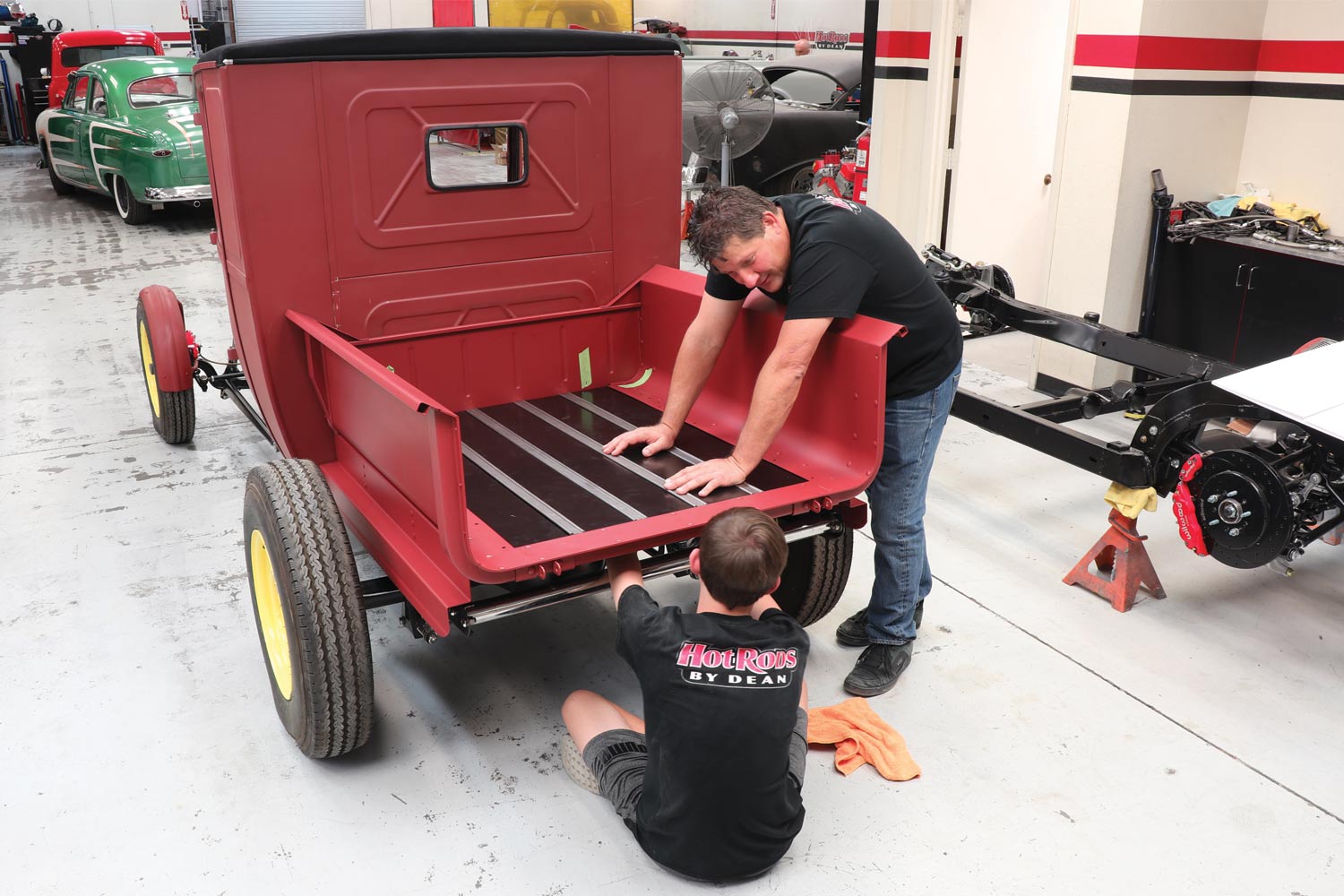
 Photography by The Author
Photography by The Authorell, I have “unearthed” my 1928 Ford extended-closed-cab pickup (originally built by the Roadster Ute Company out of Australia and now sold by Brookville Roadster here in the U.S.). While rummaging through my various projects rat-holed away at Hot Rods by Dean (Phoenix) we figured it was about time to get this oldie but goodie on the road. I’ve always liked trucks, especially roadster pickups, but figuring I would need a bit more cover from the elements I thought a closed-cab pickup would get the job I needed gettin’ done much better.
It should be noted that while Bed Wood and Parts specializes in pickup bed kits they are by no means locked into just “pickup truck beds.” In speaking with Major of Bed Wood and Parts, he tells us that his skilled craftsmen have also designed and manufactured custom-fit wood for hot rods, panels, flatbeds, or almost any project you can imagine. (It was a number of years ago but he and his staff made flooring and a toeboard for a roadster pickup project. So, I believe them when they say they can make anything out of wood for your hot rod.)

 Photography by JOHN JACKSON
Photography by JOHN JACKSONt was the beginning of the ’60s, a decade like no other, and we were about to live it. We would experience the Beatles and the Beach Boys, James Bond and Marilyn Monroe, the Cuban Missile Crisis and the assassination of a president, there was another war on many of our horizons, but in the meantime our economy was ramping up. All this and the Detroit horsepower and styling explosion was in full swing.
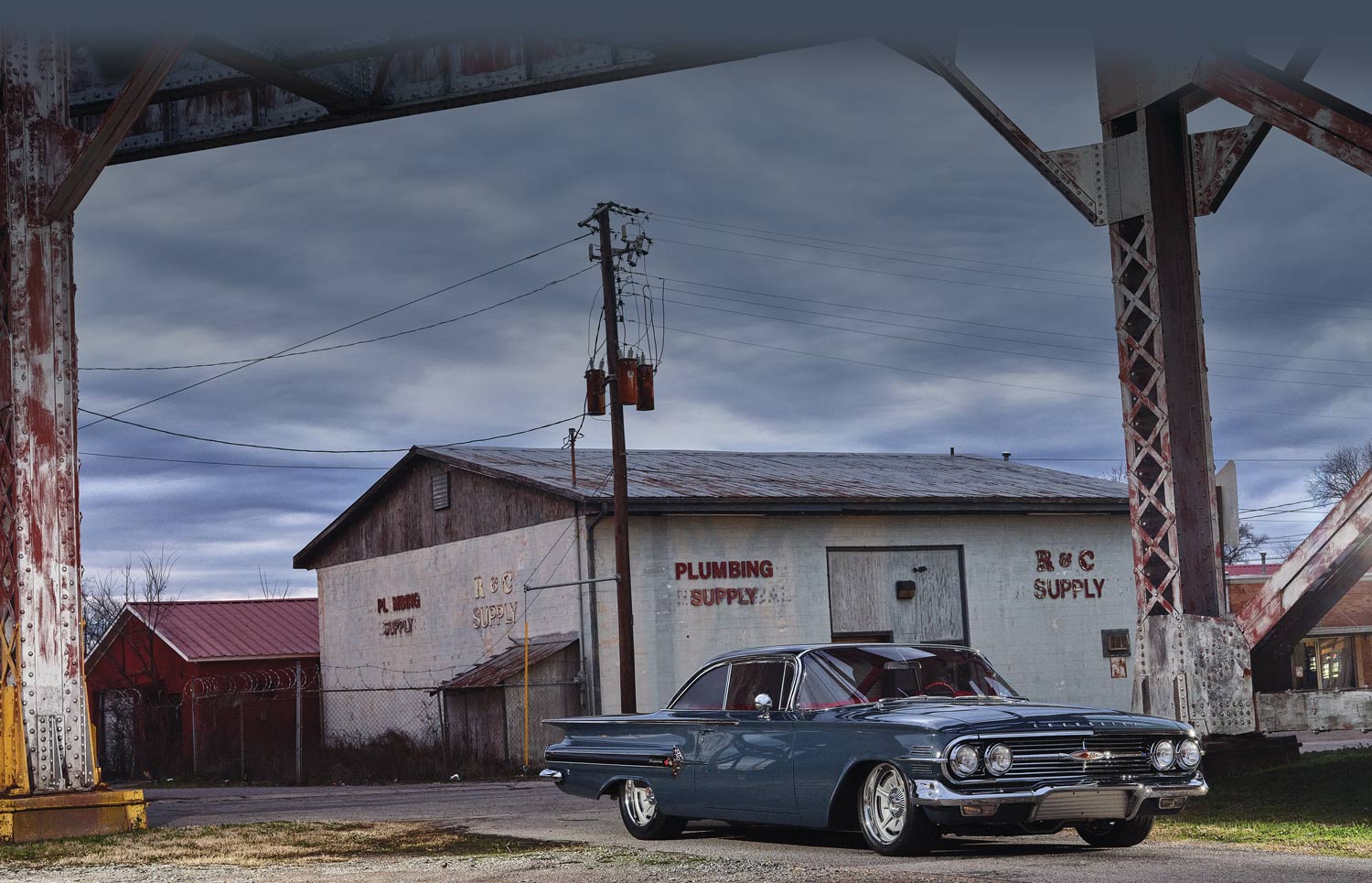
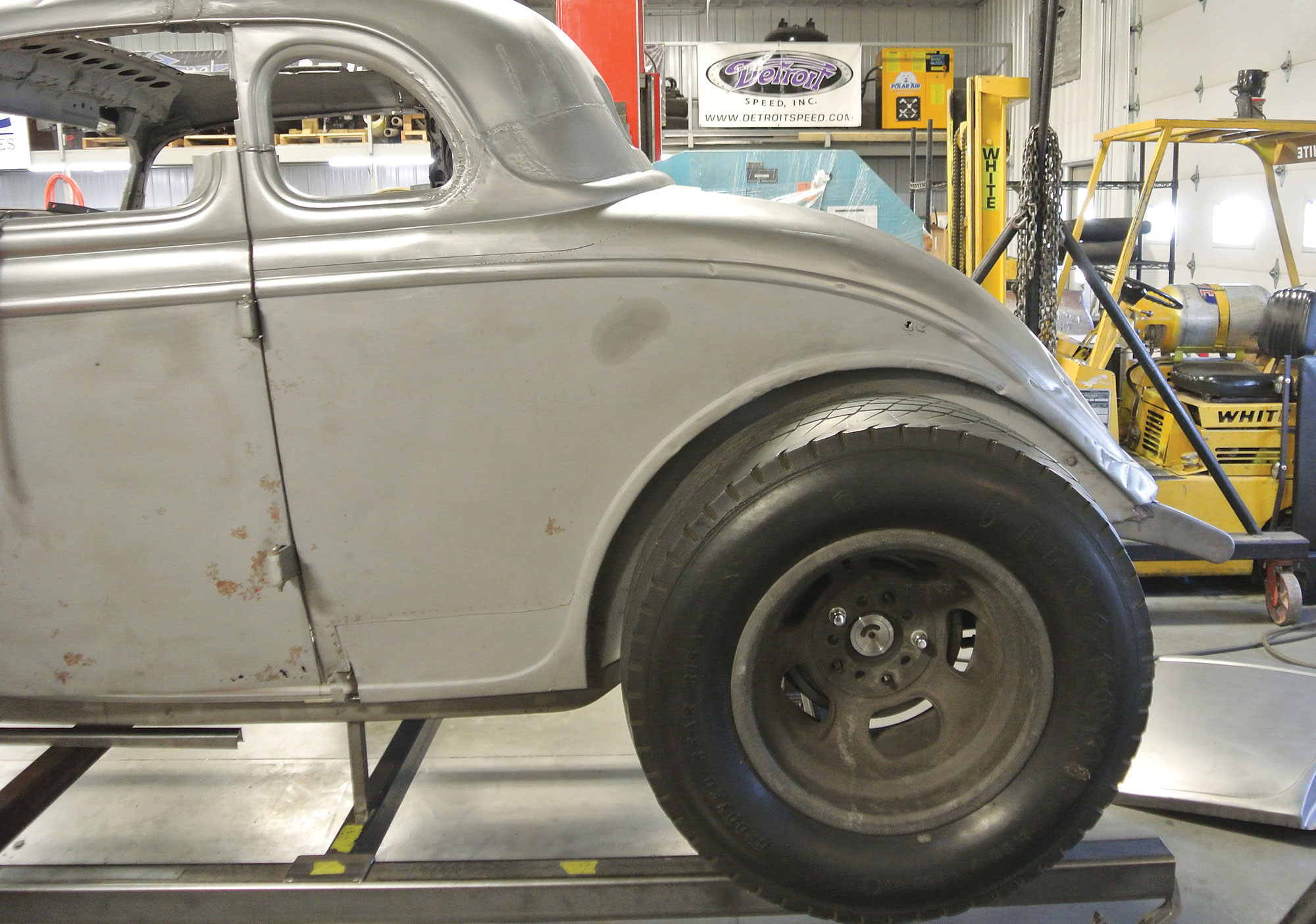
 Photography by THE AUTHOR
Photography by THE AUTHORow, we all know Texas is horse country. Yessiree Bob, Texans love their horses almost as much as they love horsepower. Bill Sather is a horsepower-lovin’ Texan through and through, and while Texas is known for quarter horses, Sather was having his latest steed quartered—as in adding a pair of new quarter-panels. Yes, his 1934 Ford coupe was in need of some rust and wreck repair in the quarter-panel region so he left it to the team at BBT Fabrications to fit his coupe with a pair of reproduction quarter-panels from Steve’s Auto Restorations (SAR). BBT’s Troy Gudgel would also be fitting the new SAR rear panel between the quarters and below the decklid. Finally, they would be building a very cool rolled pan.
So far this sounds like pretty standard fare, but of course there is always a hitch … and we’re not talking about a place to park your horse (Burger, I’m not sure Texans “park” their horses. —B.B.). The hitch is this, SAR doesn’t make reproduction steel quarter-panels for the three- or five-window coupe. They do make a very nice reproduction of the 1934 Ford roadster quarter-panel and as it says on their website, these quarter-panels can be trimmed to fit to coupe bodies. Actually, adapting the roadster quarters to the coupe body involves trimming and some forming in areas for a perfect fit, but it’s a high-quality part and a great start. At this point we also need to confess this tech piece is slightly out of sequence of the actual build. We have already shown how BBT “repaired and re-chopped the top” on this coupe (Modern Rodding Mar. ’21 issue, inthegaragemedia.com/chop-chop/). These quarter-panels were installed prior to the top repair.
here are a lot of ways to end up with the hot rod of your dreams. And, over the course of time, most of us will try many, if not all, of these routes. Doug and Mistie Scott of Texas have always enjoyed Tri-Fives, especially the 1955 Chevy Bel Air post model. Having always wanted one and having one, as we all know, are two completely different subjects that come about in two totally different ways. For the Scotts they were able to get what they wanted in nearly one fell swoop.
In looking for a project, Doug and Mistie happened upon this Tri-Five Bowtie and it checked all the boxes for them—classy, all the while having modern-day performance and style. As with any hot rod any of us would purchase, there’s a lot there that we like but there’s always room to do a little more to make it “our own.” Originally purchased in Arizona about four years ago, the 1955 Chevy Bel Air made its way back to Texas by way of Oklahoma through Mississippi.
 Photography by JOHN JACKSON
Photography by JOHN JACKSON
Modern Rodding FEATURE

 Photography by Grant Cox
Photography by Grant Coxe could start this story out with any number of story lines but here’s one 1969 Chevy Camaro SS/RS that will be hard to miss with its 705 dyno-proven horsepower and 684 lb-ft of torque. This first-gen belongs to Jerry Reynolds of Arkansas and we should tell you up front he’s retired from a job all of us at one time or another have dreamed about. Rodders enjoy a mutual “love” of hot rods–and tools! He retired from Snap-on–yes, that tool company. Really, does it get any better? Amazing tools and an amazing and brutally powerful 1969 Chevy Camaro SS/RS.
To listen to Jerry, he will tell you that “This 1969 Camaro was found in the weeds beside a shop in Fayetteville, Arkansas.” It represents the makings of a lifelong dream to own a first-gen, especially a potent one. Over the course of time he enlisted the help of many of his friends, including Gary Angel, Mark Alexander, Andy Porter (deceased), Kenny Barr, Matt Bigellow, Mike Jones, Rick Pearce, and Gary Hagar (owner of the H.A.C.K. Shack).
We mentioned in the opening about the brutish power this first-gen packs, so how about a little more to explain just what resides underhood. The 555-inch big-block Chevy—and we do mean big-block—is based on a Dart Big M iron block (4.56-inch bore and 4.25-inch stroke) that features billet steel four-bolt main caps and dual bolt patterns fitting standard and notched oil pans. From here JE forged 10.00:1 pistons are used along with an Edelbrock roller cam and aluminum heads topped with Billet Specialties valve covers. Pat Musi Racing performed the machinework, which includes balancing the rotating assembly. Other Edelbrock components include a Victor Jr. intake, Pro-Flow II 1,000-cfm EFI (topped with a Billet Specialties air cleaner), and engine management system along while the high-octane “go-juice” supplied by an Aeromotive A1000 fuel pump mounted in the polished Rock Valley 17-gallon tank. You will also find ACCEL Extreme 9000 ceramic plug wires as well as a Mallory distributor and coil firing the “load.” Making sure the water pump, alternator, power steering, and A/C compressor are all in sync falls to the efforts of a Vintage Air Front Runner (serpentine belt system) pulling these jobs together.


 Photography by Lonnie Gilbertson
Photography by Lonnie Gilbertsonhen Chevrolet introduced the Corvair for 1960 it was revolutionary in many regards. The rear-mounted, air-cooled engine arrangement was not unusual for European cars (Volkswagen, Renault, Fiat, and others) but for GM to try it didn’t just push the contemporary American design envelope, it tore it apart.
View Index
View Index

 Photography Courtesy of THE Greg Sharp Collection
Photography Courtesy of THE Greg Sharp Collection t would be easy to just list his vast number of accomplishments and still have a plenty long story. But it wouldn’t tell you about the man. By the time you read this he will have celebrated his 99th birthday. And he’s still vital, charming, witty, kind, and the very definition of a class act as he ever was. He can fit in virtually any situation or crowd. He was in on the ground floor of the speed shop business as well as trade shows. He’s been a racer, a retailer, an editor, a promoter, and a film maker, and has done it all with style.
If you were fortunate enough to be around Alex and his close friend of seven decades Wally Parks you would soon see they were two of a kind. Both real gentlemen who still had no problem busting the chops of the other. “Can we go now or are you going to sign autographs all night?” was one of the more common jabs.
Alexander Basil Xydias literally grew up in Hollywood. His father Anthony was a Greek immigrant who raised himself up from running a small theater in Mississippi that catered to World War I soldiers in nearby Camp Selby but by the early ’20s had moved to Hollywood and became a movie producer under the title Sunset Productions. By 1928, young Alex lived in a big house on Crescent Heights Boulevard complete with a maid and a new Auburn or Cord in the driveway. Sunset Productions made dozens of movies, many of them westerns starring silent film hero Jack Hoxie. Then, a year before the Depression, it all came apart. Anthony developed prostate cancer. He survived, but his recovery took so long that he completely missed the conversion to talking pictures. His business failed and with it his marriage.



